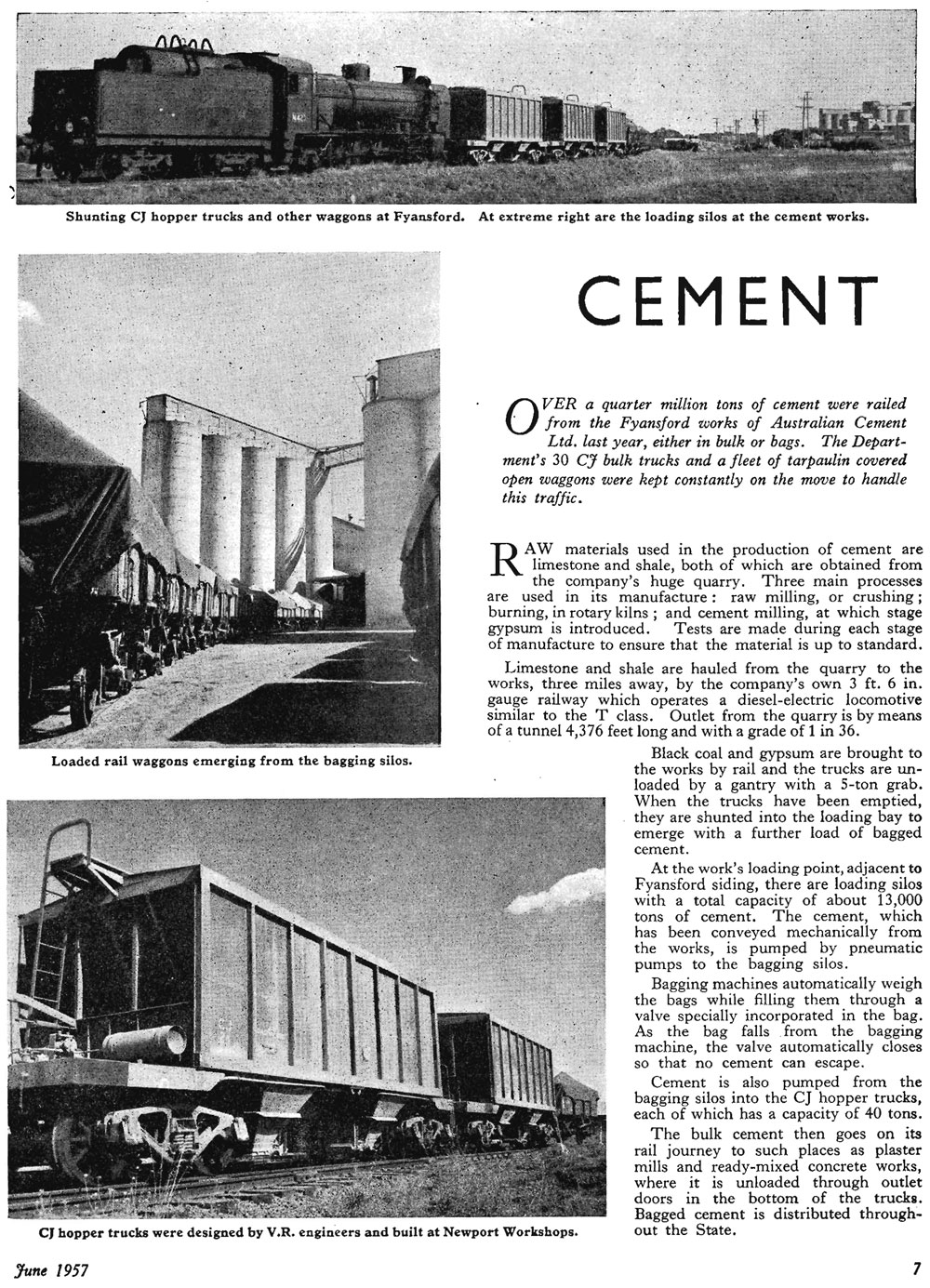CJ: Bogie cement hoppers
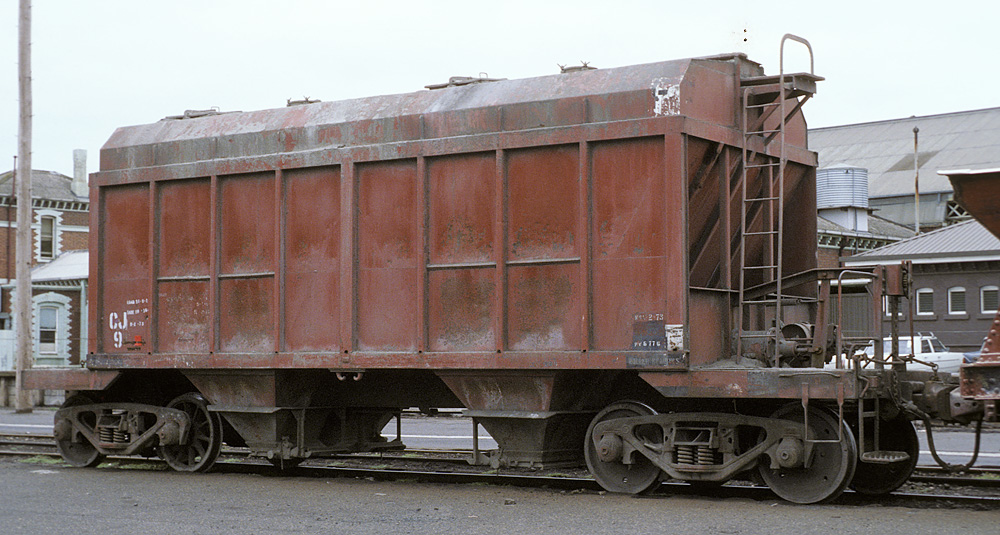
A total of 97 CJ's were built, or converted between 1950 and 1961 to transport cement from Fyansford to Bandiana for the Kiewa Hydro-electric scheme, after this traffic finished the CJ's sole traffic was bulk cement from Fyansford and Waurn Ponds to Arden Street (North Melbourne) in block trains. (they were coded CJF from 1966 - 1970)
For a relatively small class the CJ's were quite interesting. 12 CJ's (51 - 54 and 80 - 87) were converted from J open hoppers (nos 1 - 12) assembled at Newport from parts by the American Car and Foundry Export Co. in 1925. These open hoppers had been in coal traffic. For cement service the sides were extended, a roof with inlet hatches and modified gravity discharge doors were added. The other CJ's were built as cement hoppers but had their capacity extended by raising the sides/ends in the 1960s. Other variations are shown and explained below.
The wagon sides were battered heavily above the discharge doors due to the people unloading them hammering on the sides to dislodge all of the cement. The photo below of CJ 36 shows this well.
Numbers
1 - 50
51 - 54
55 - 79
80 - 87
88 - 97
Built
1950 - 1958
1959
1959 - 1960
1959 - 1960
1961
Notes
Built New
ex J hoppers
Built New
ex J hoppers
Built new
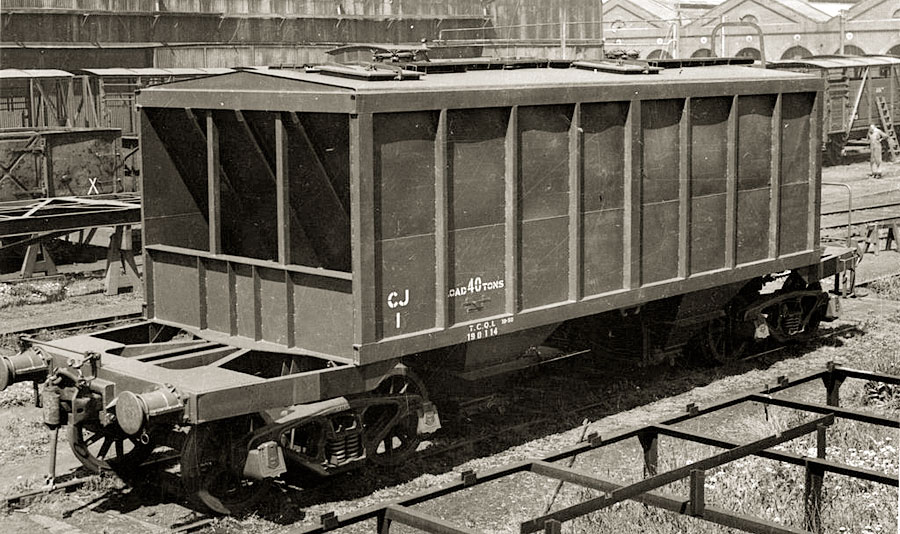
ABOVE: CJ 1 in "as built" condition 1950 (prior to having its roof raised to increase capacity) BELOW: CJ 1 in 1978 after its capacity was increased. The roof raising increased carrying capacity by approx 10 tons. At some stage horizontal ribs were added to the body above the discharge chutes (shown below). This was in the area where workers hammered on the sides to dislodge cement whilst unloading. It is surmised that these ribs were added to protect the seams that ran the full length of the wagon.
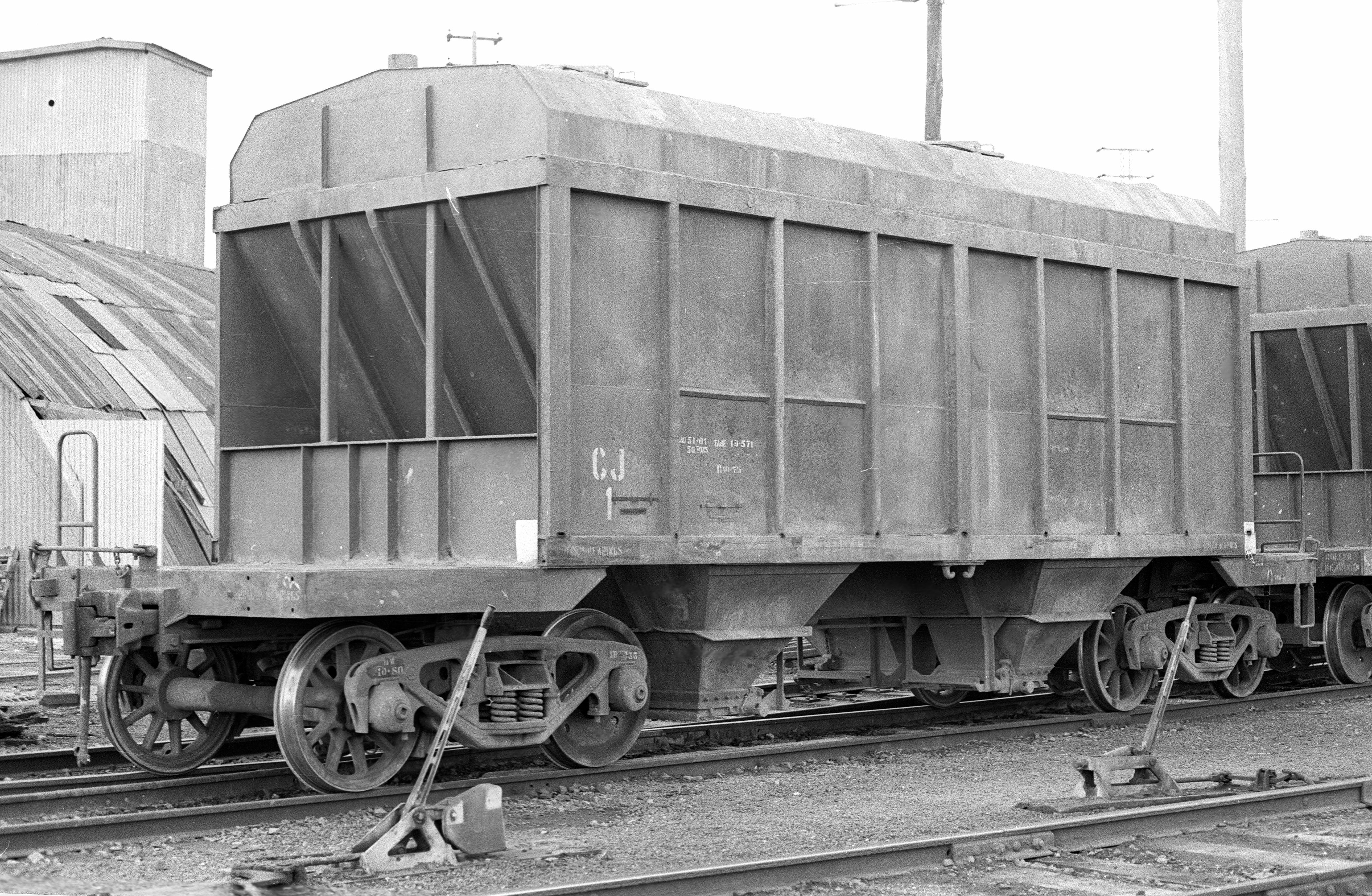
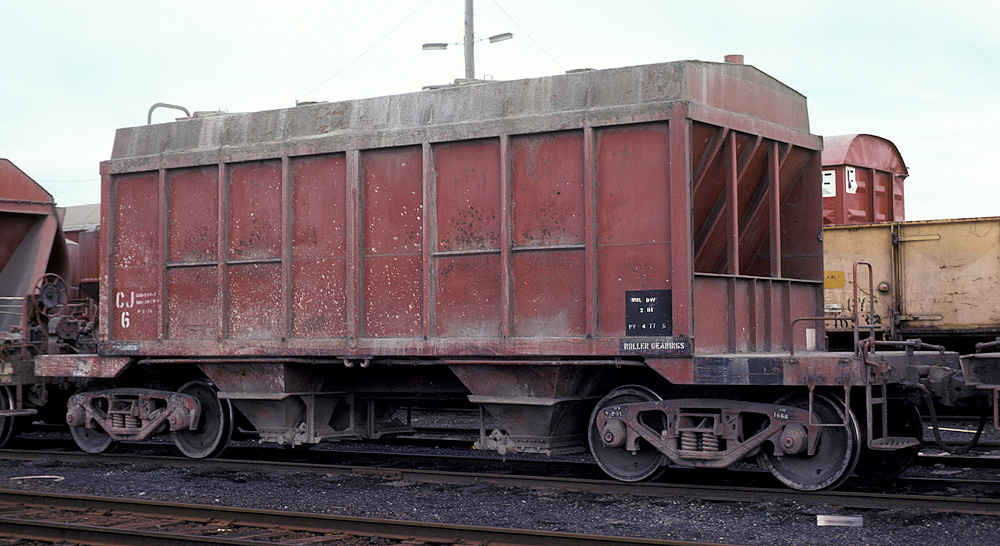
ABOVE: CJ 6 at Nth Geelong yard. June 27 1978, photo courtesy Geoff Winkler
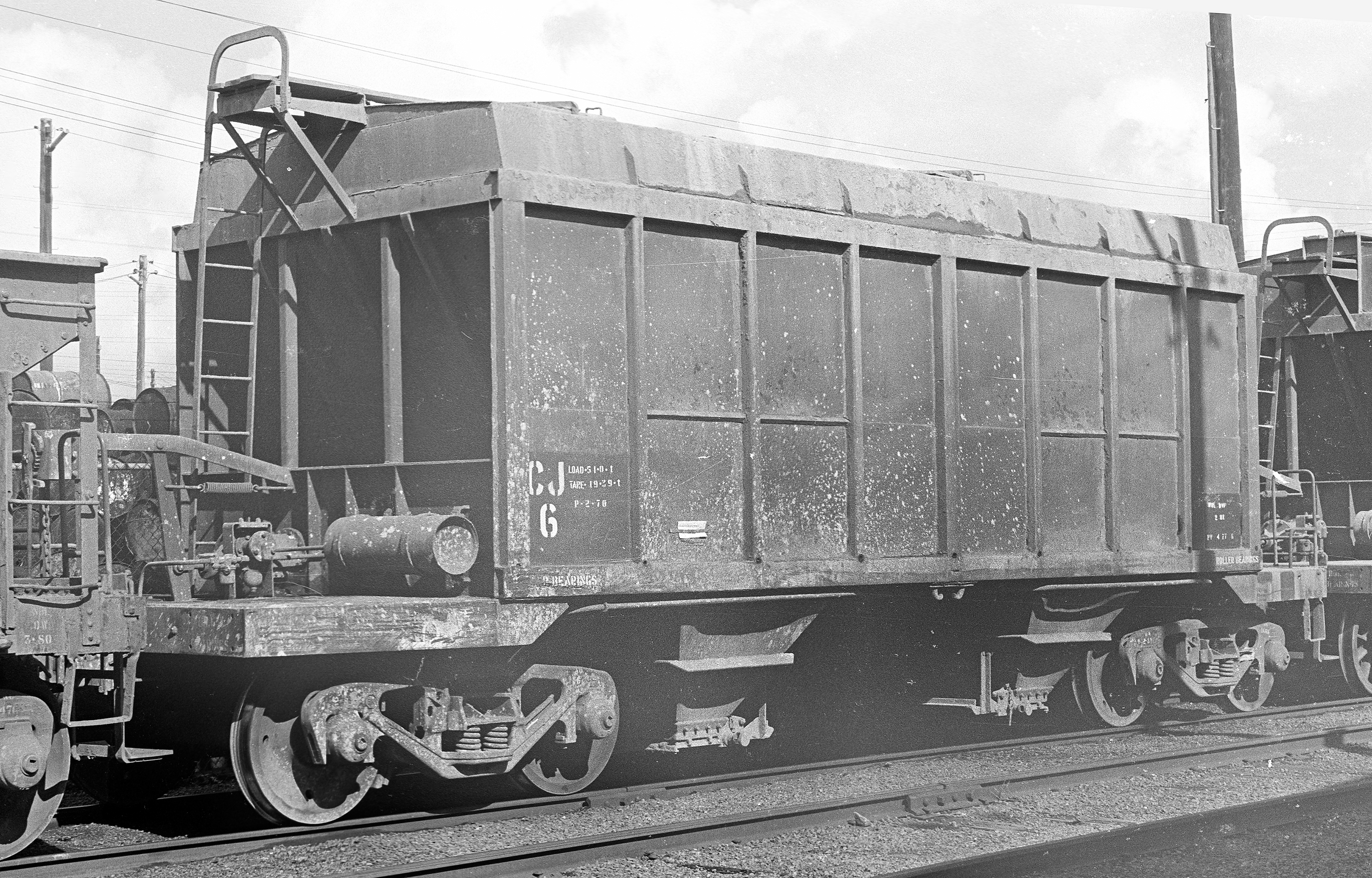
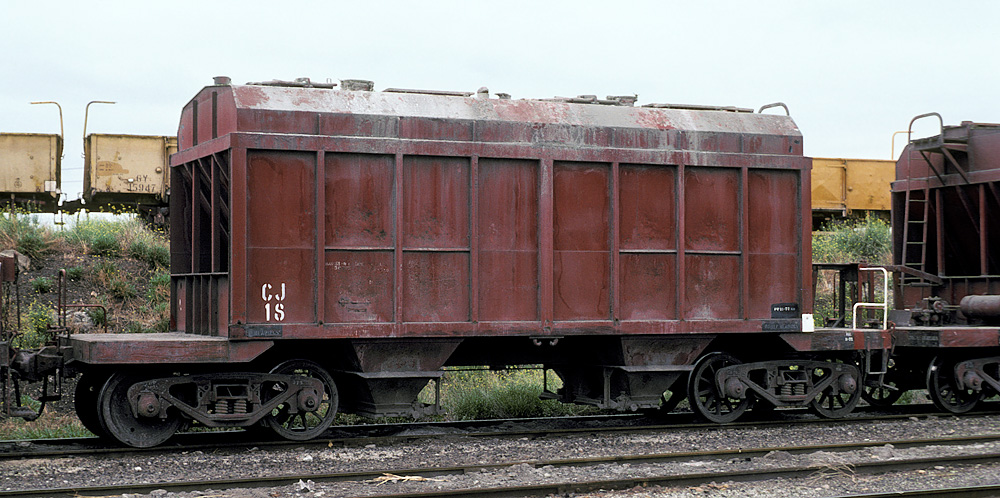
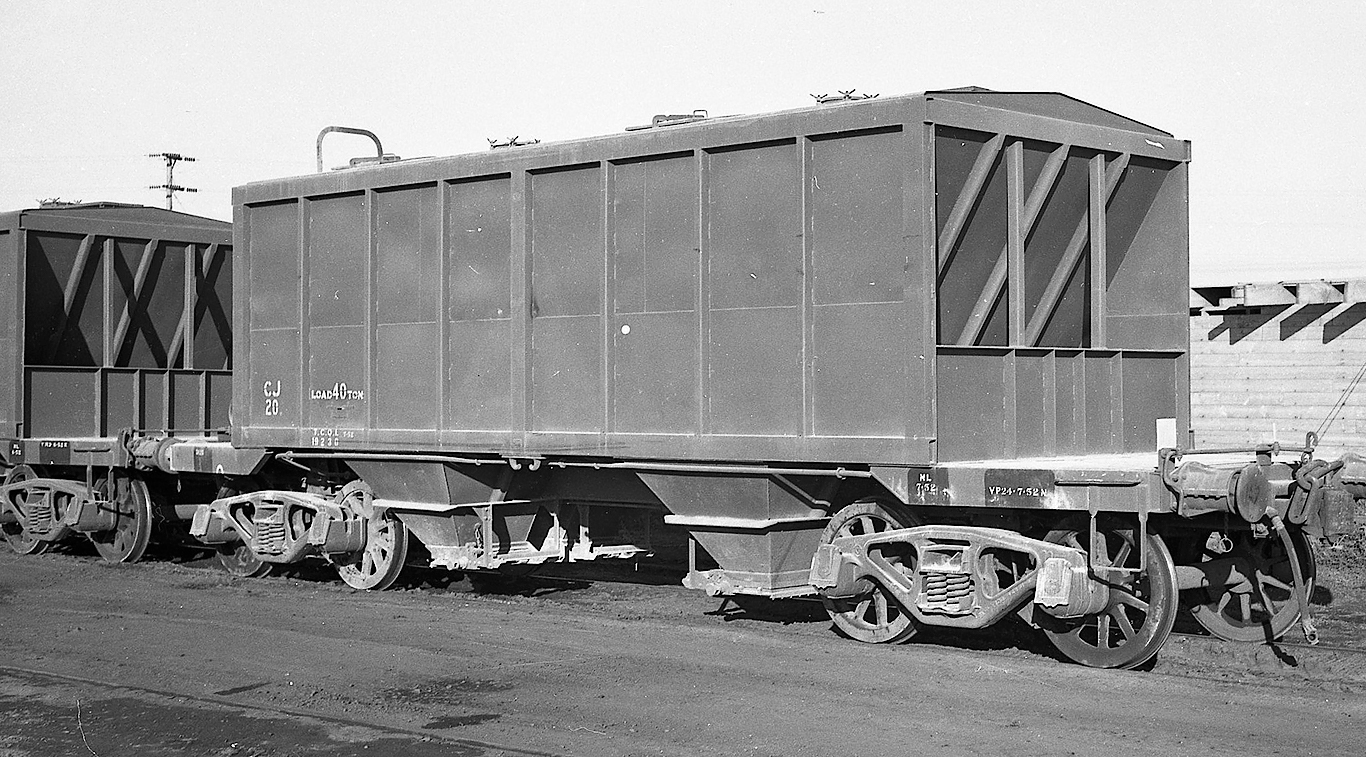
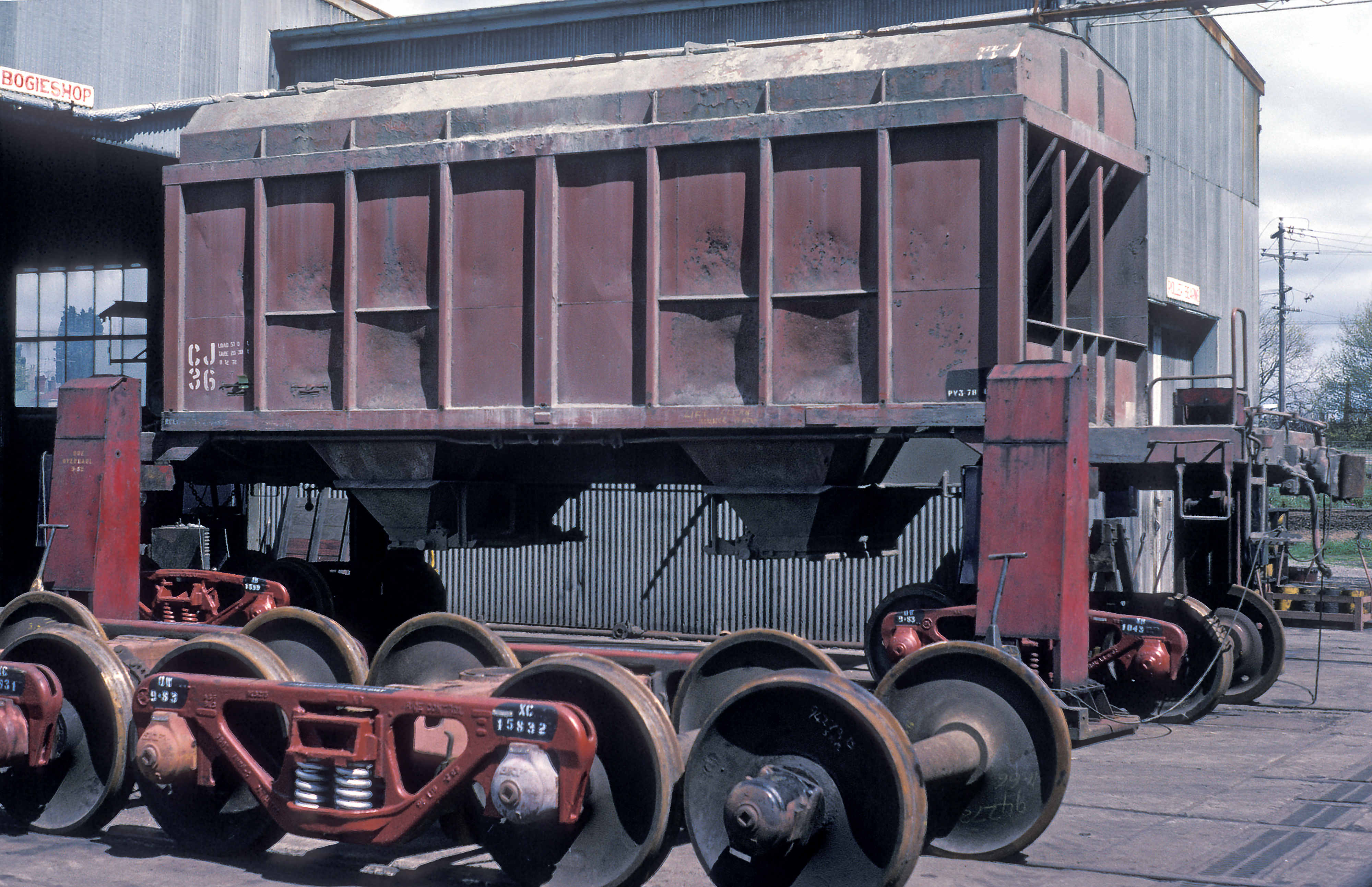
ABOVE: CJ 36 recieves a new set of bogies at Ballarat workshops 1978.
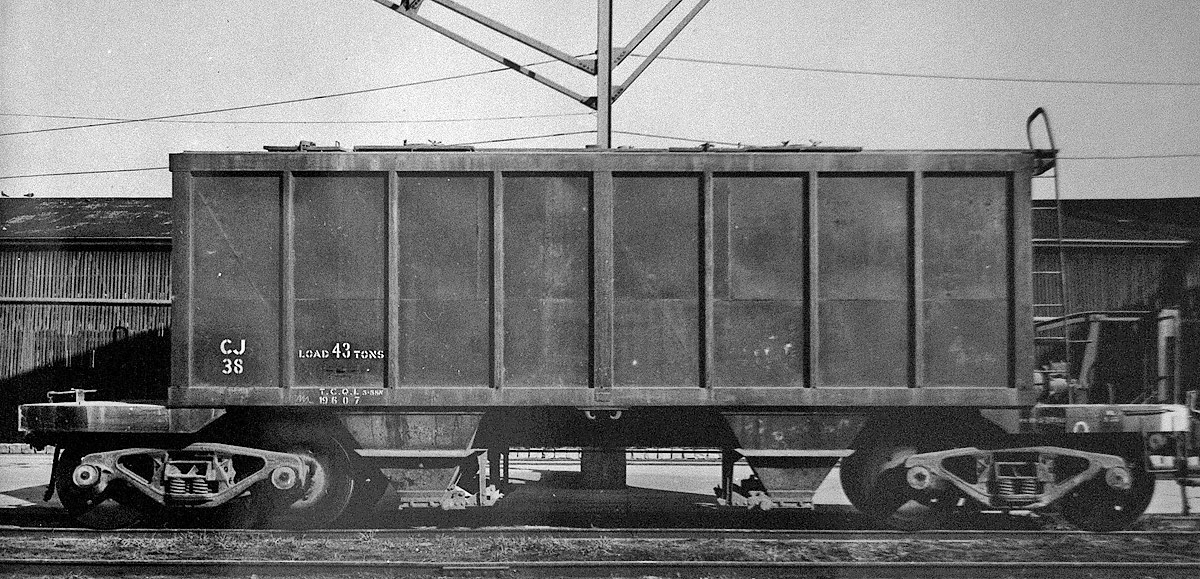
ABOVE: CJ 38 photographed May 1958, before its capacity was increased. official VR photo.
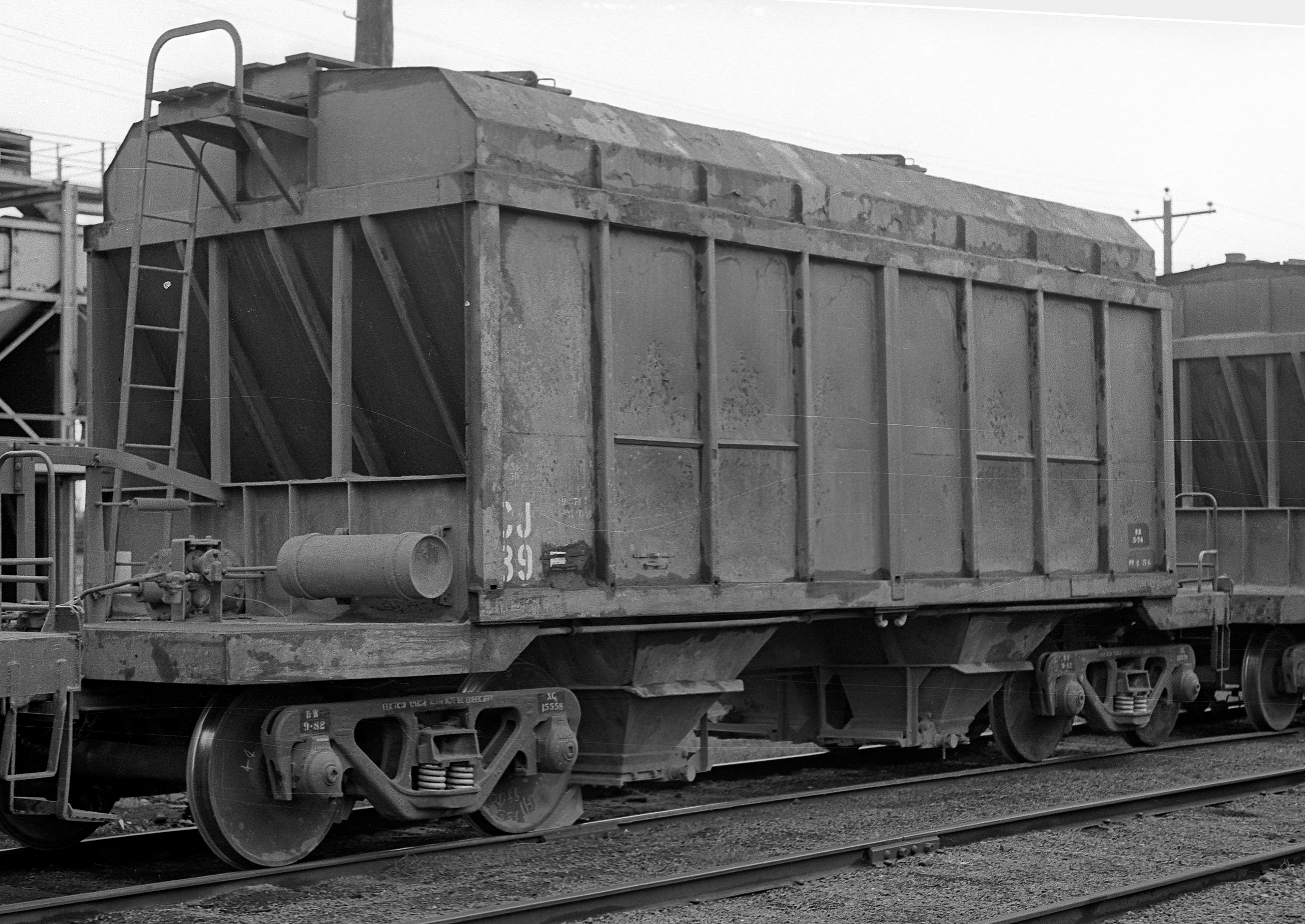
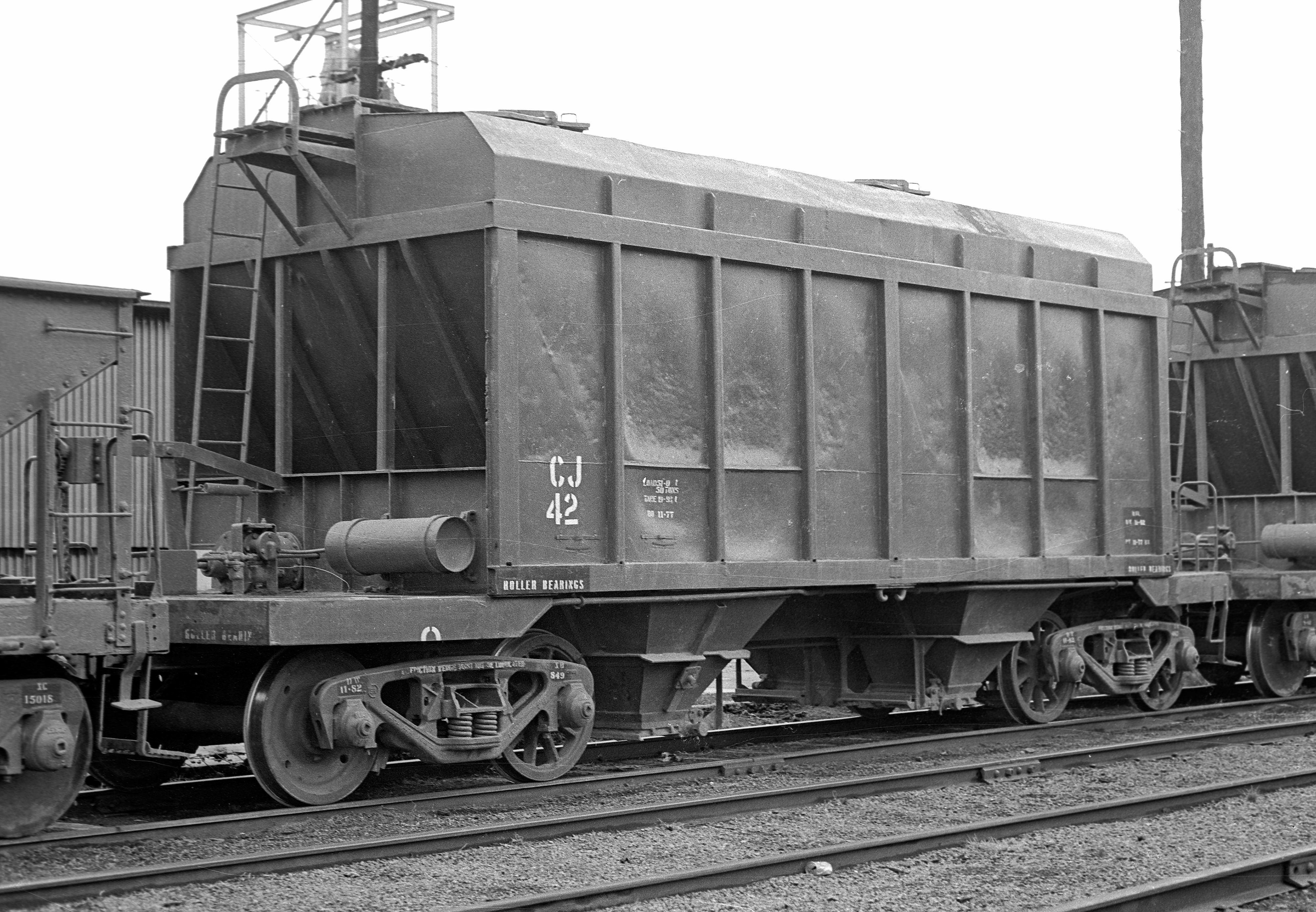
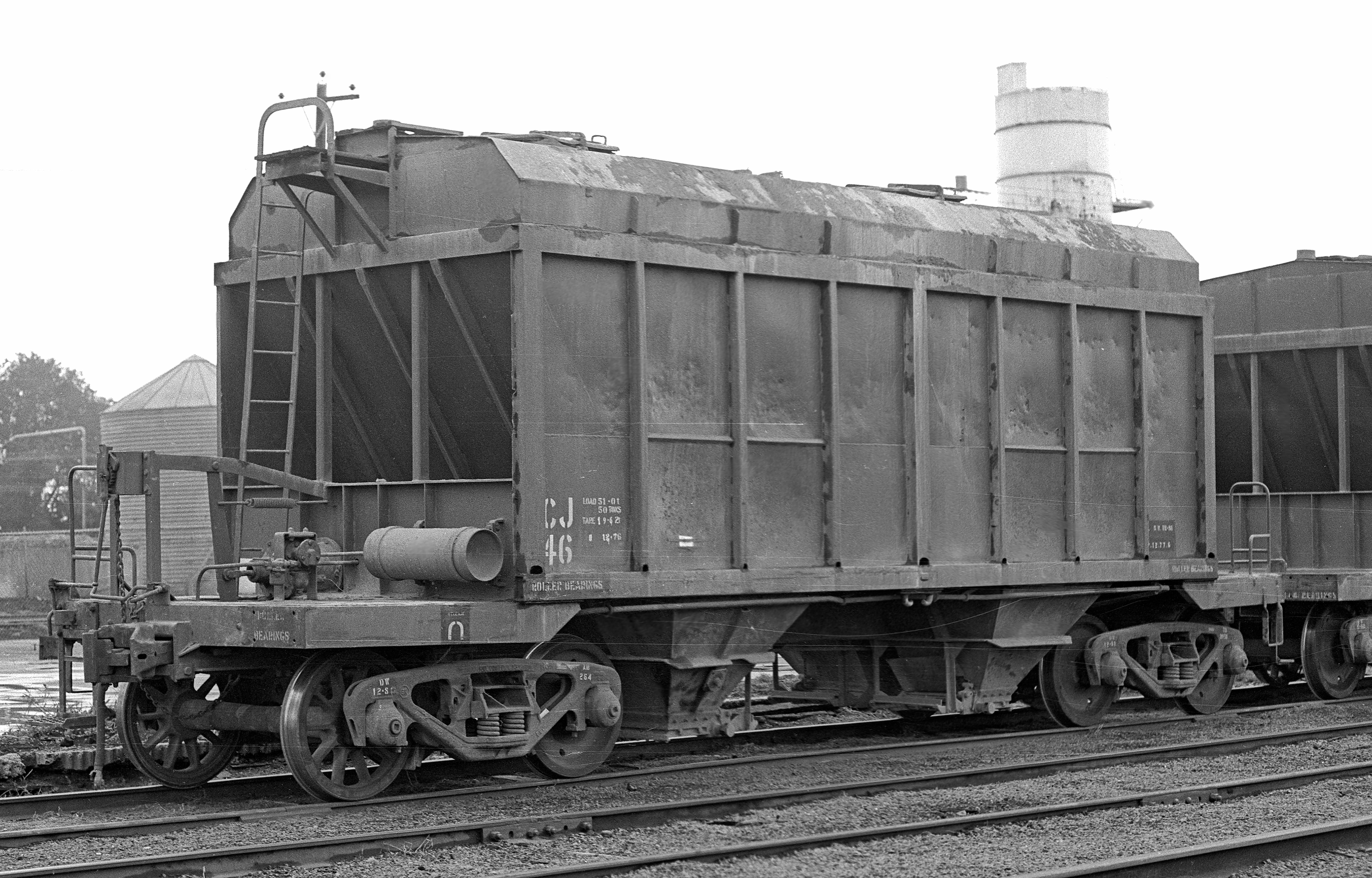
ABOVE: CJ 46 at Ardern St Feb 1978
BELOW CJ 53, at Ardern St, Feb 1978. 12 CJ's (51 - 54 and 80 - 87) were converted from J open hoppers (nos 1 - 12) assembled at Newport from parts by the American Car and Foundry Export Co. in 1925. For cement service the sides were extended, a roof with inlet hatches and modified gravity discharge doors were added.
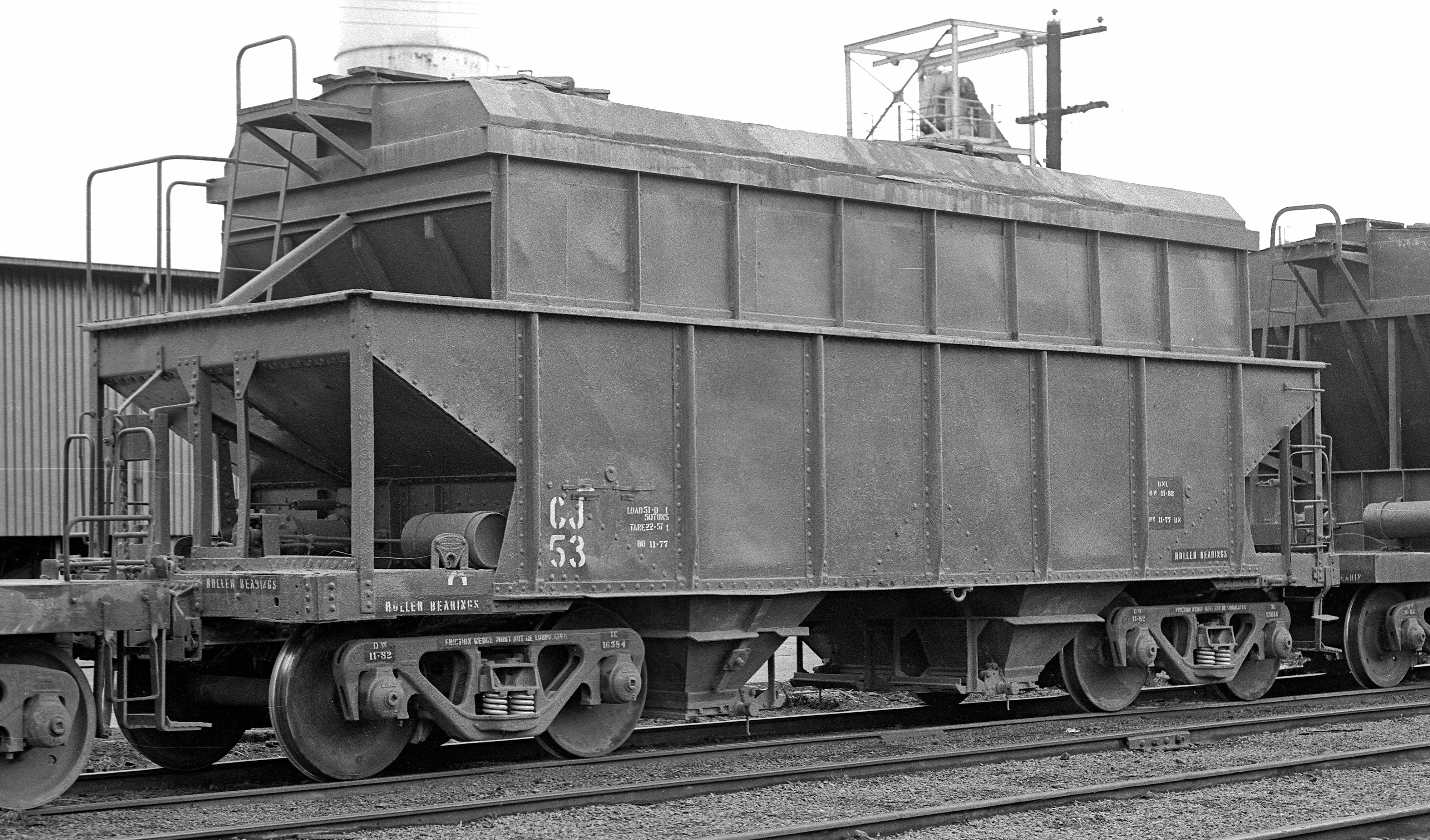
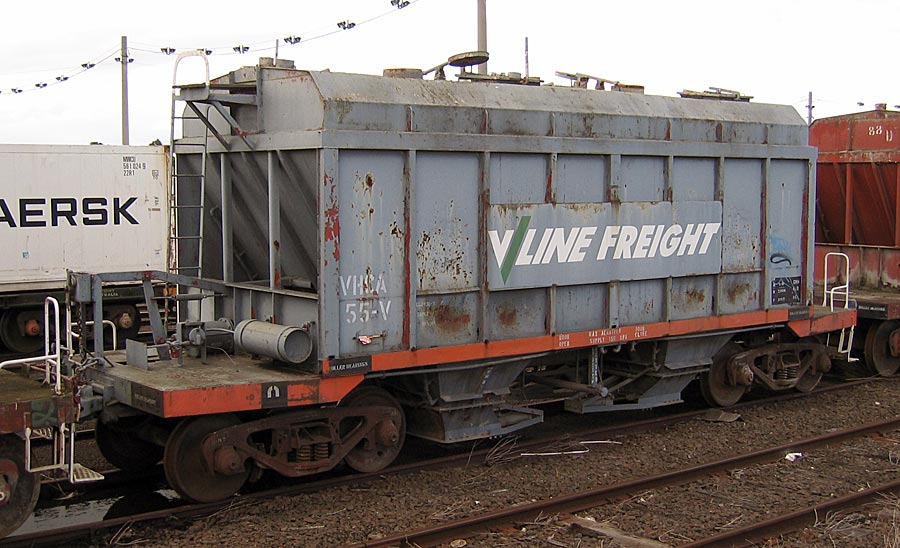
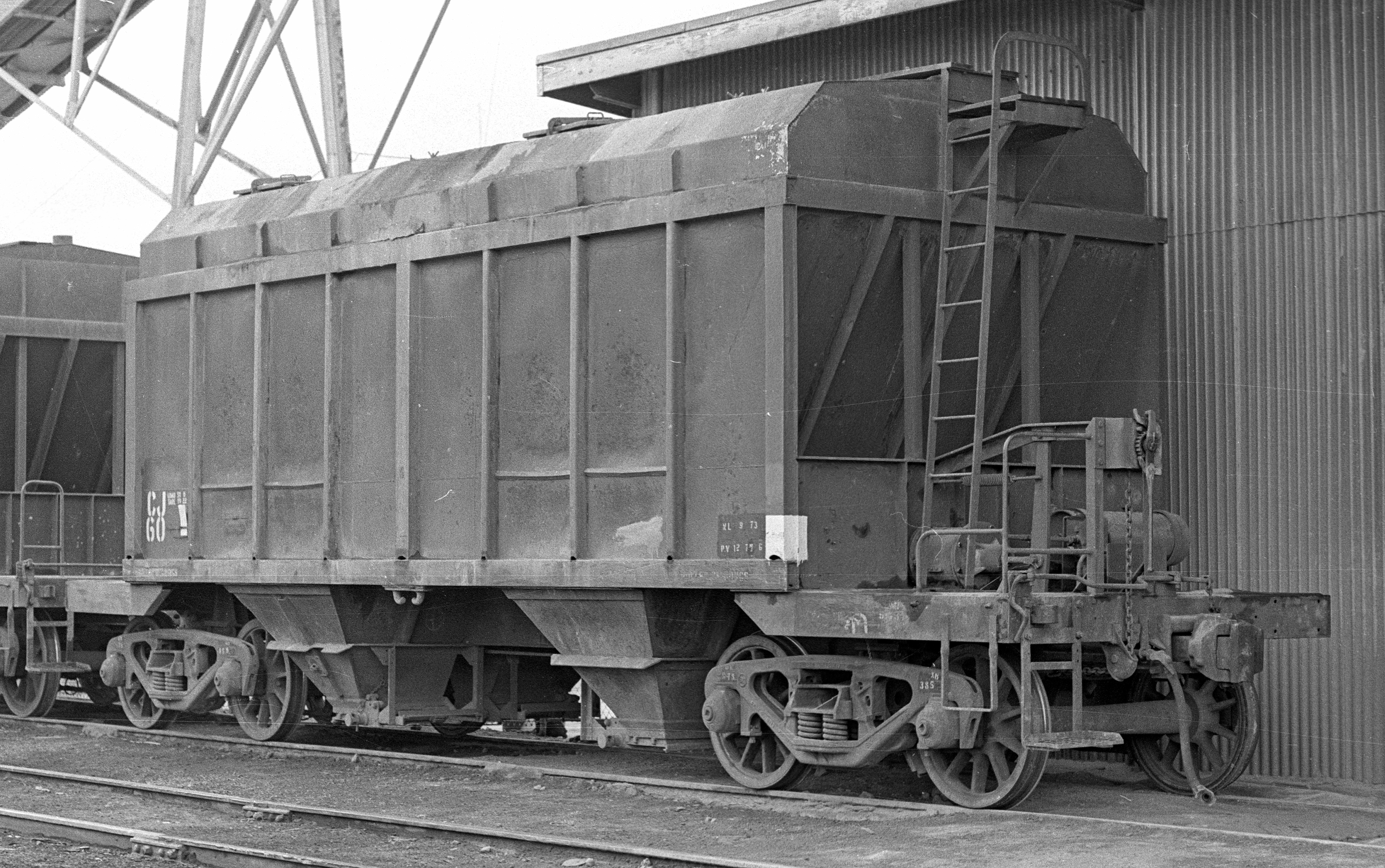
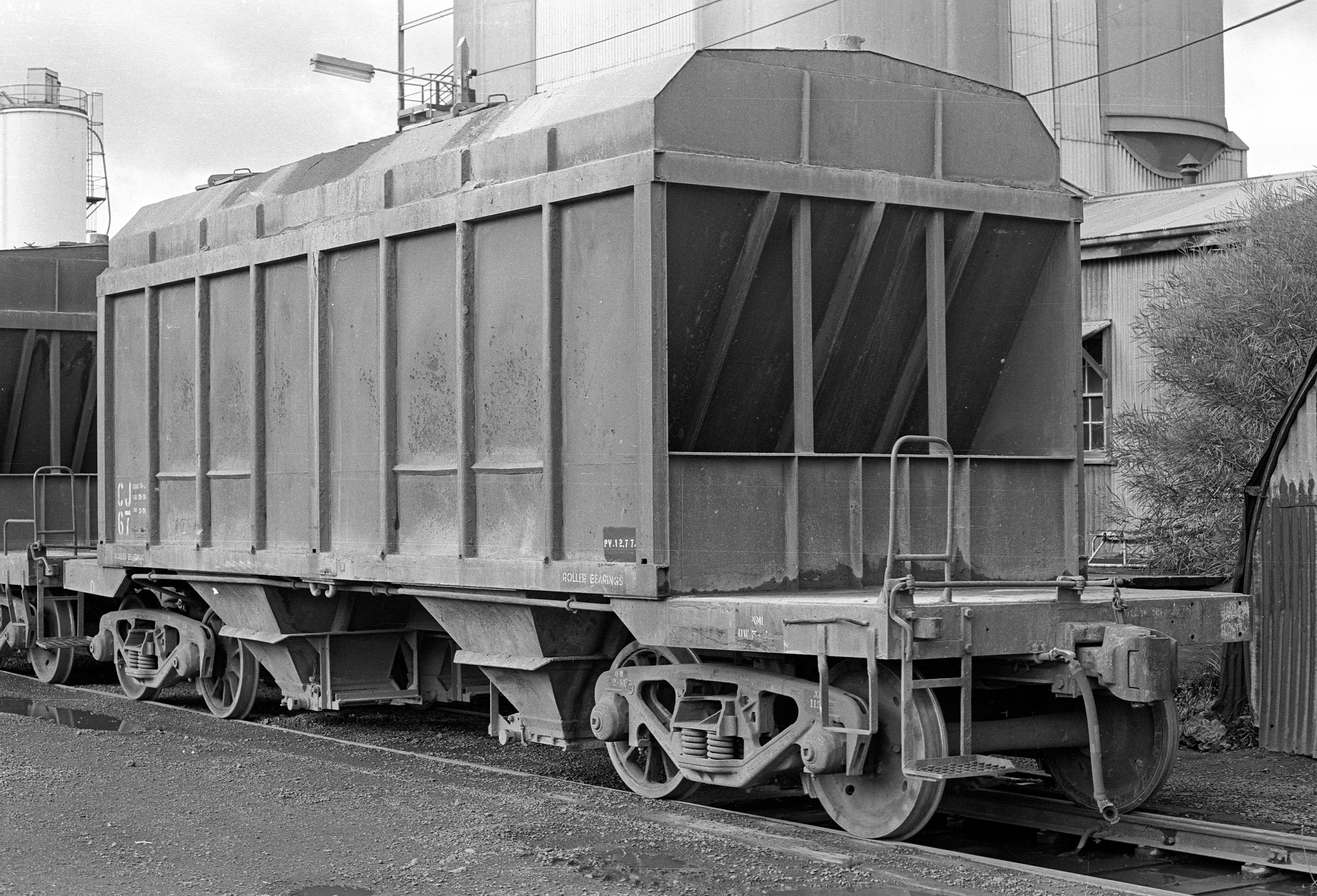
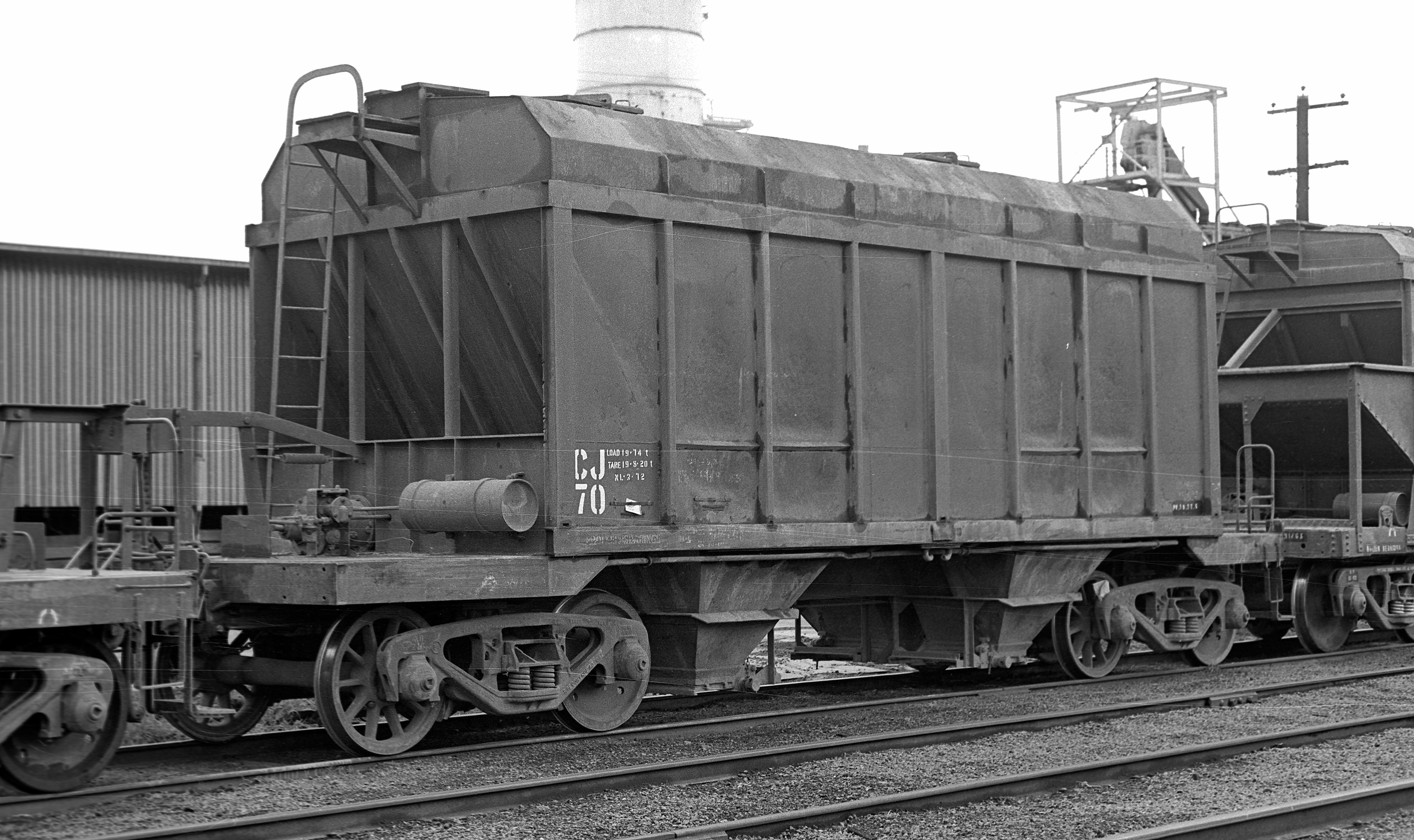
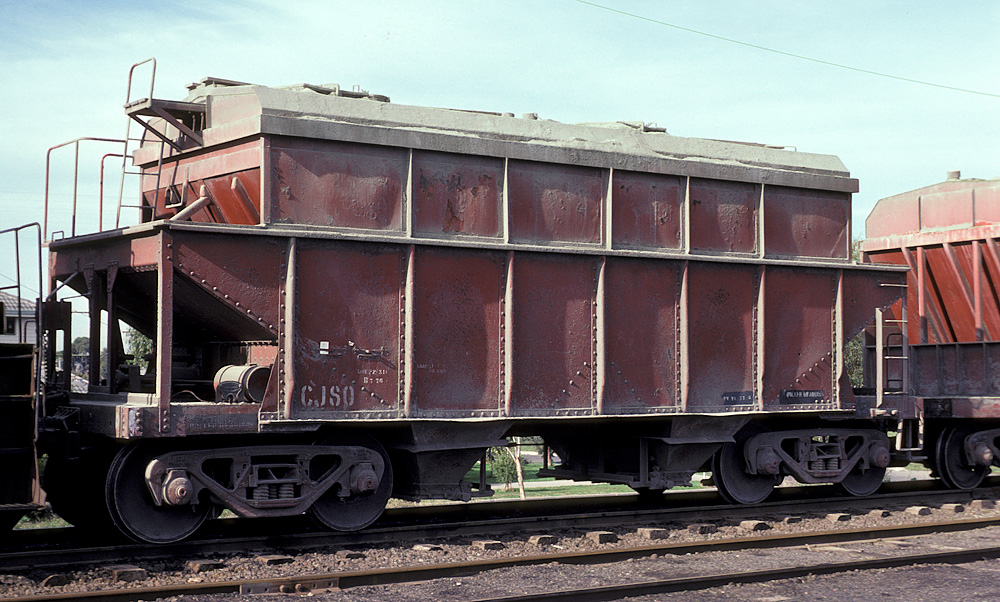
ABOVE: CJ 80 at Fyansford. June 27 1978, photo courtesy Geoff Winkler
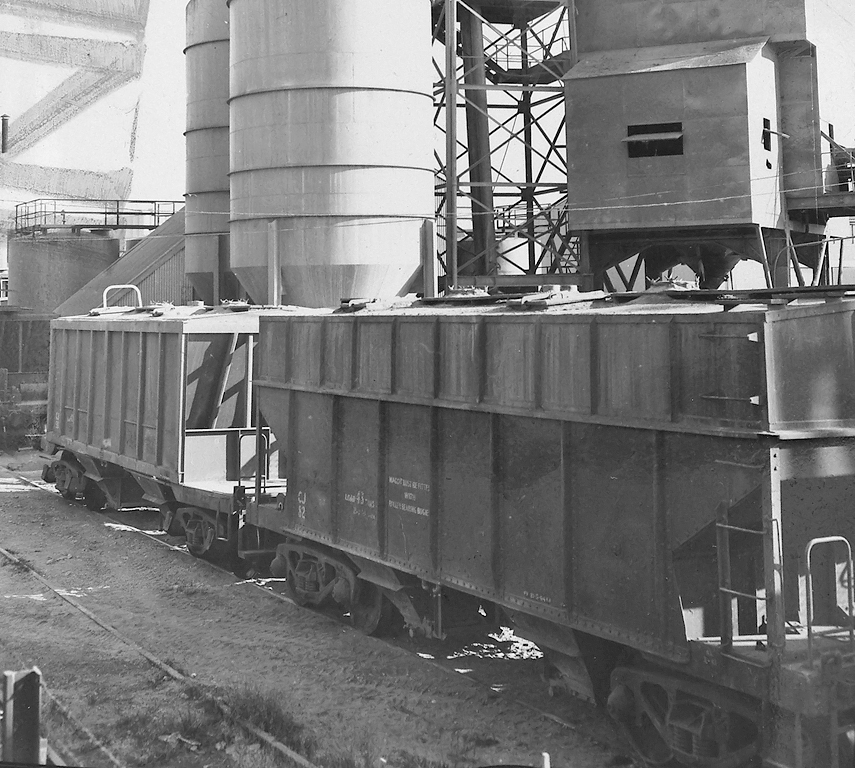
ABOVE: CJ 82 at Arden Street, June 1965. This roof style was quite different to the later roof that the ex J wagons recieved. (official VR photo M 10283)
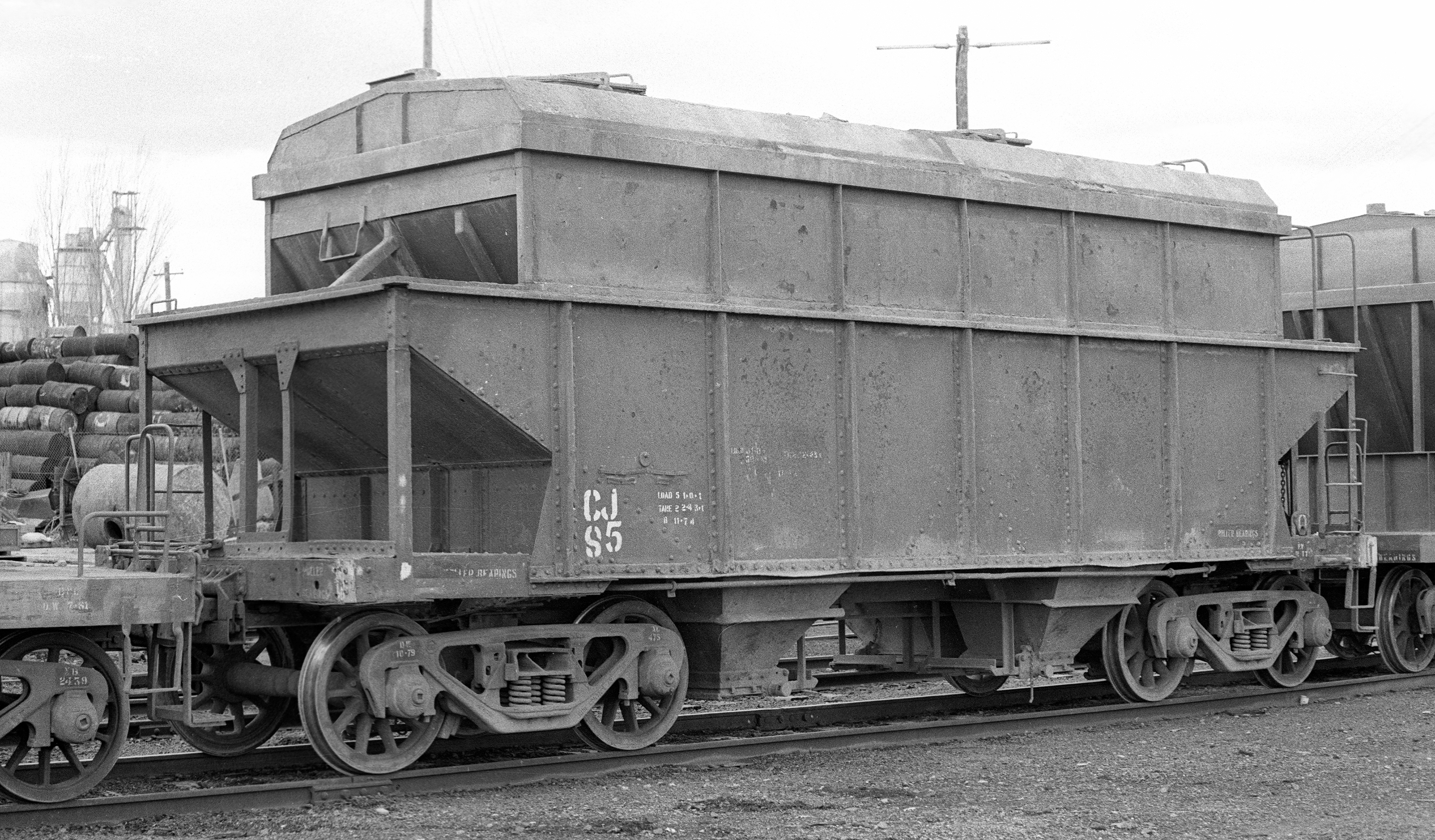
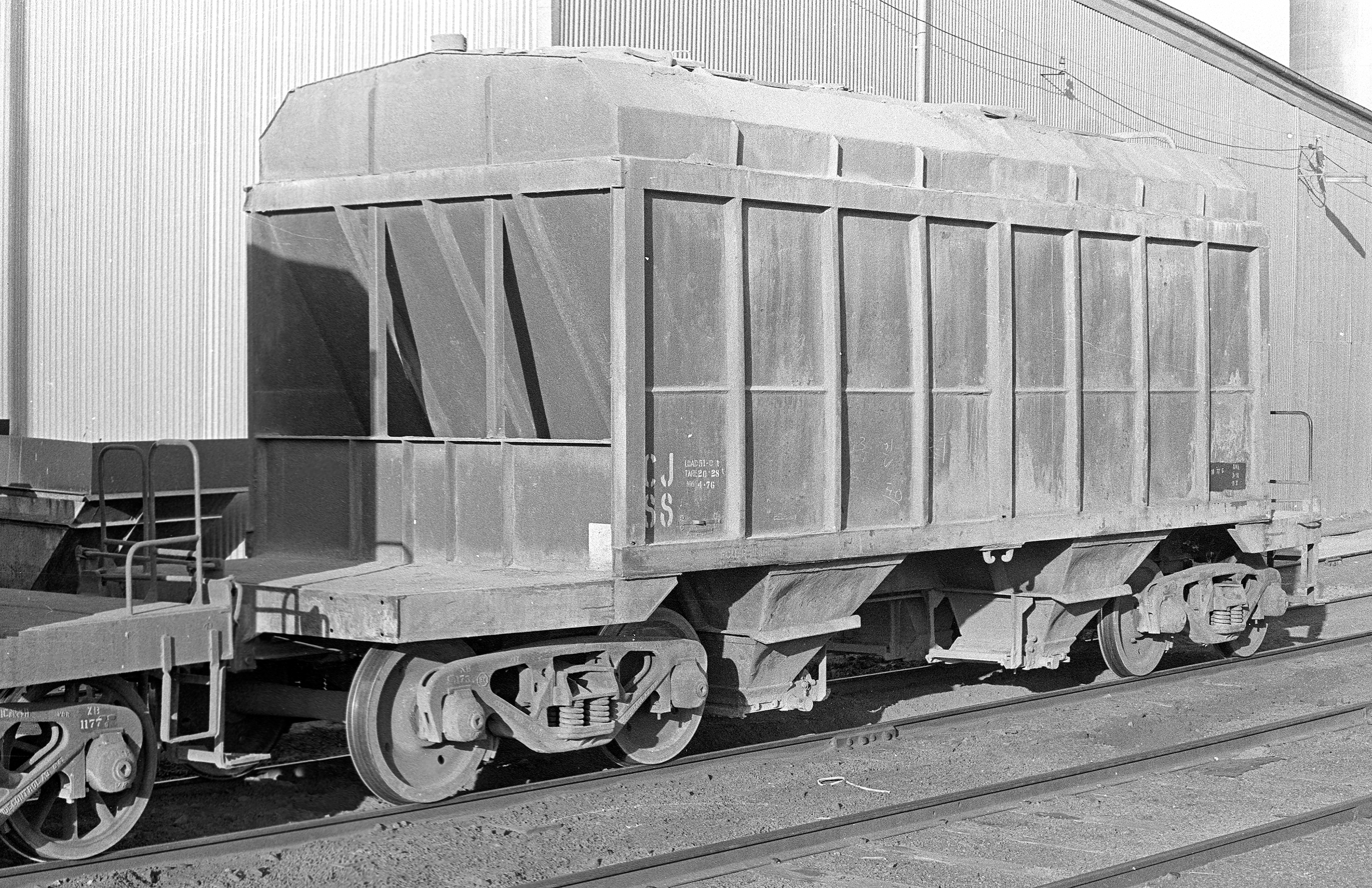
ABOVE: CJ 88 at Ardern st, 1978. Note the full length horizontal ribs which were unlike any other CJ.
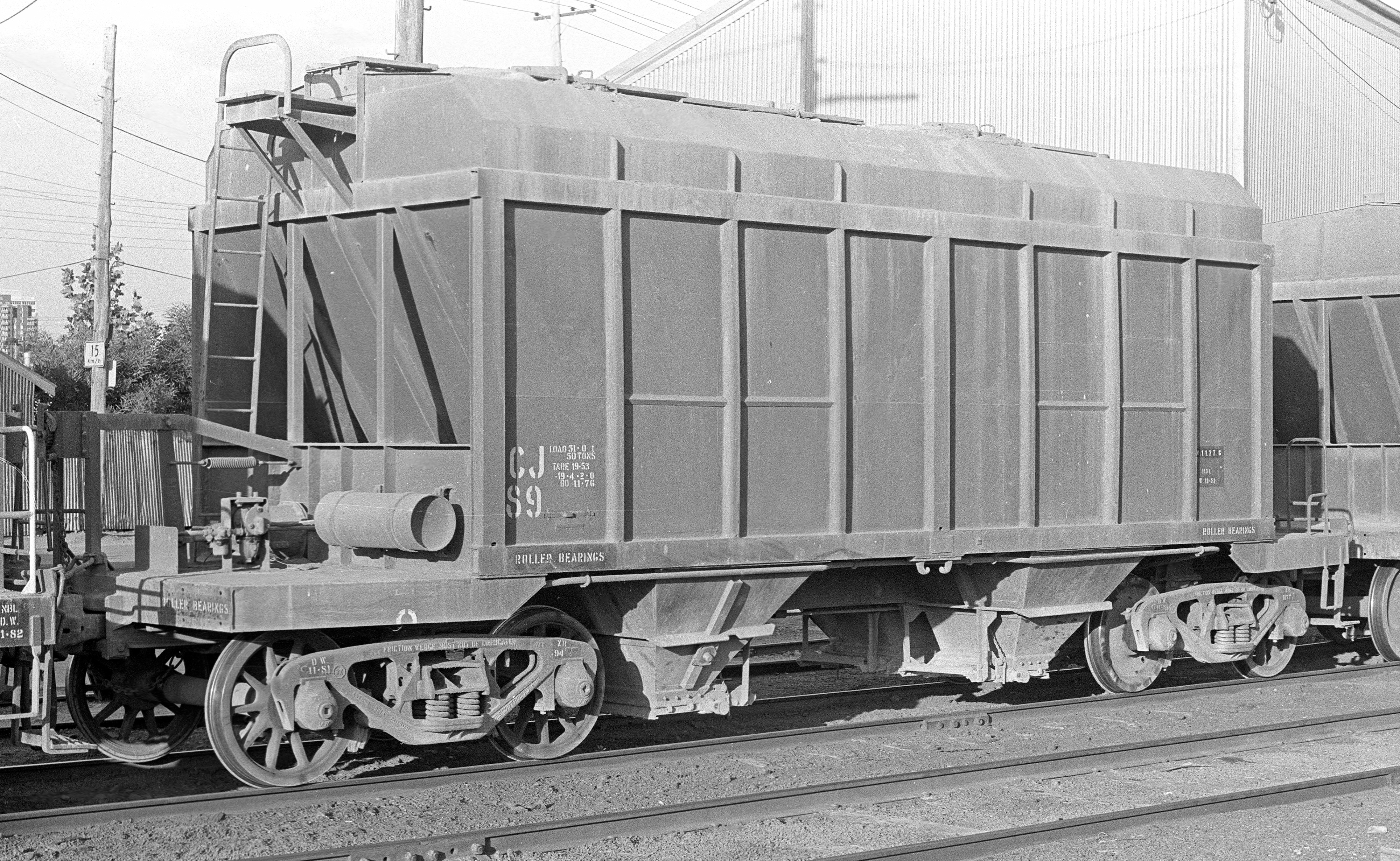
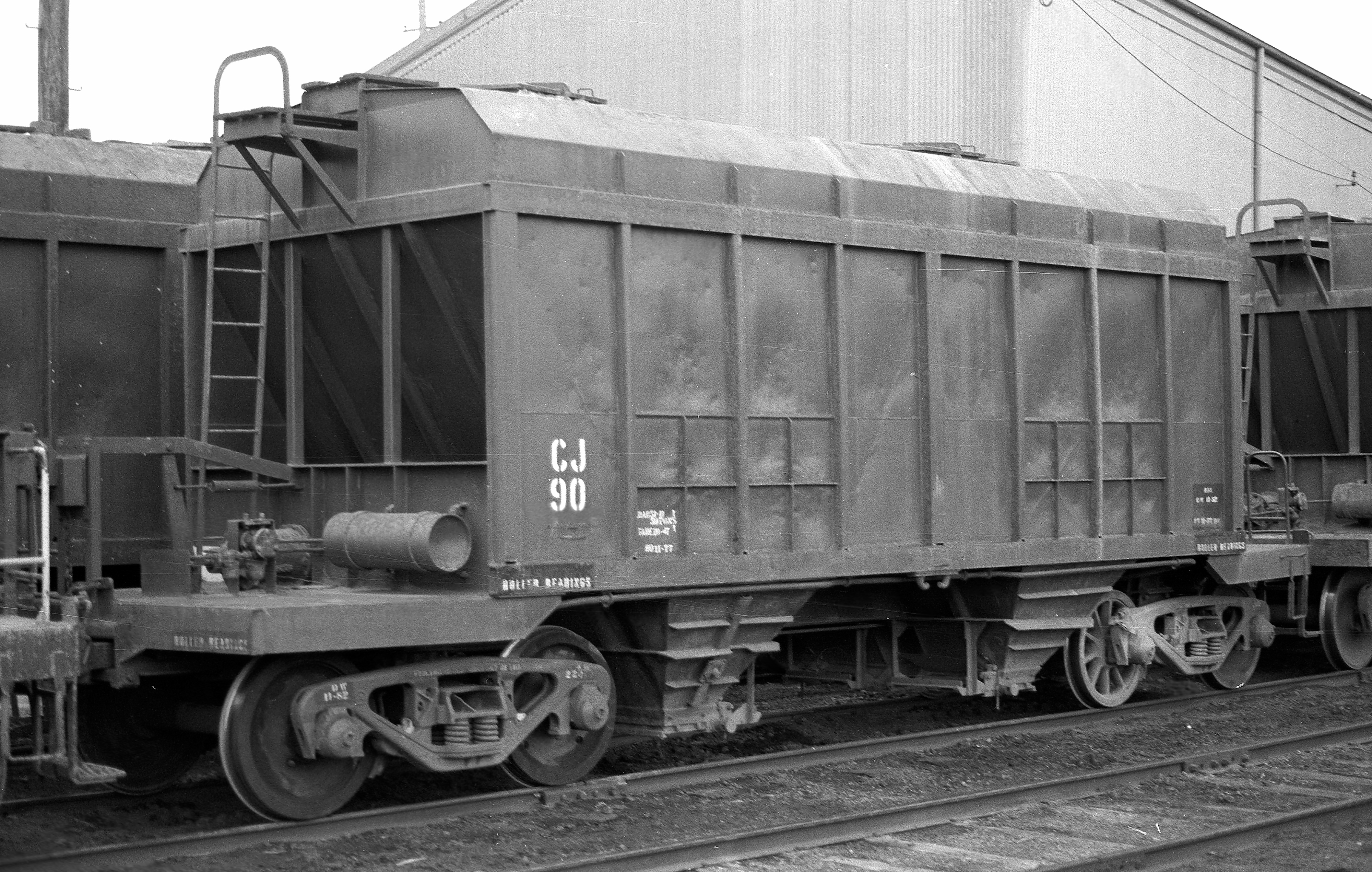
ABOVE: This out of focus photo of CJ 90 shows its unique rib arrangement. Ardern St 1978.
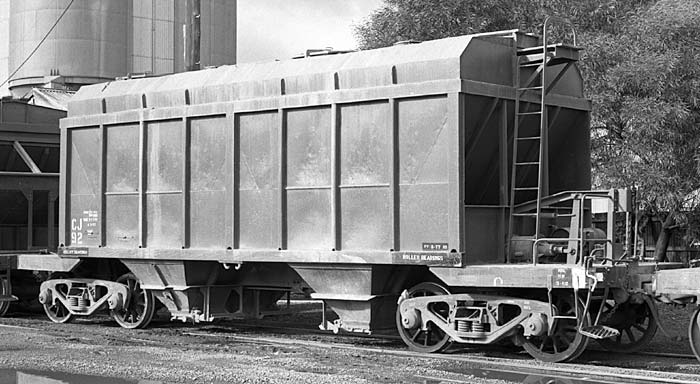
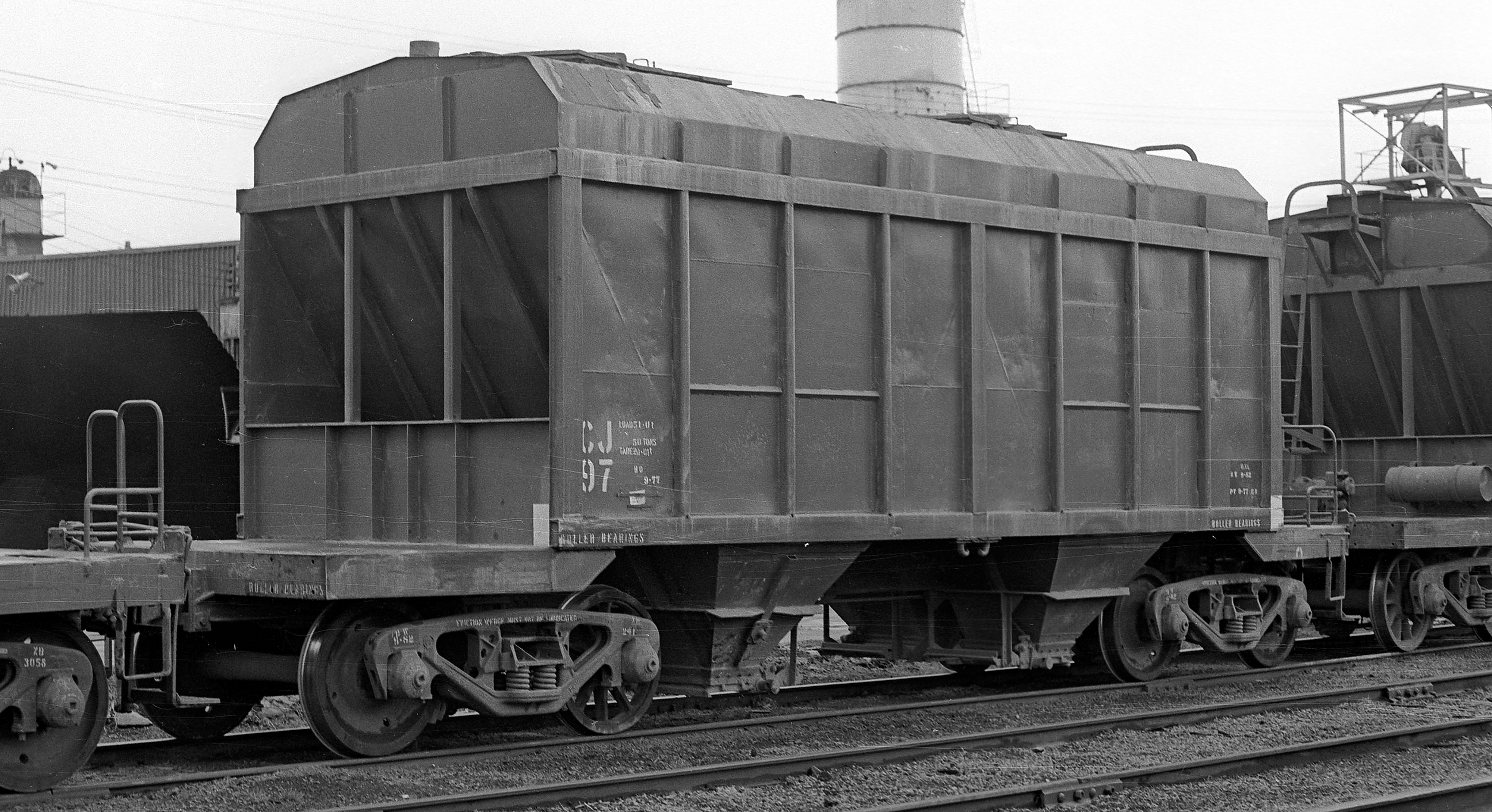
ABOVE: This wonderful old photo probably dates from the 1870's. It shows Powder van #1 which the 1904 diagram book and the register tells us was built in 1862 by Wright & son a group of 5 wagons (1 - 5) It was equipped with Westinghouse air brake in 1912 and is shown as scrapped 16/6/1954.
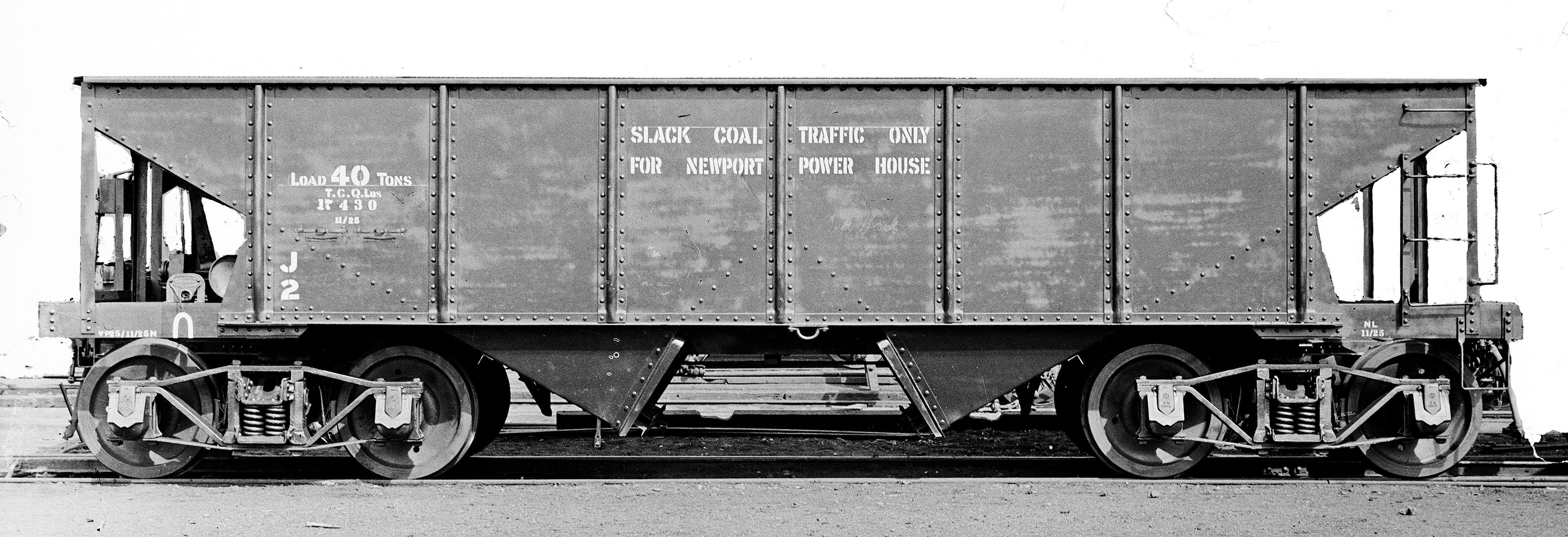
ABOVE & BELOW: 1925 view of J 2 which became CJ 87 in 1960. official VR photo
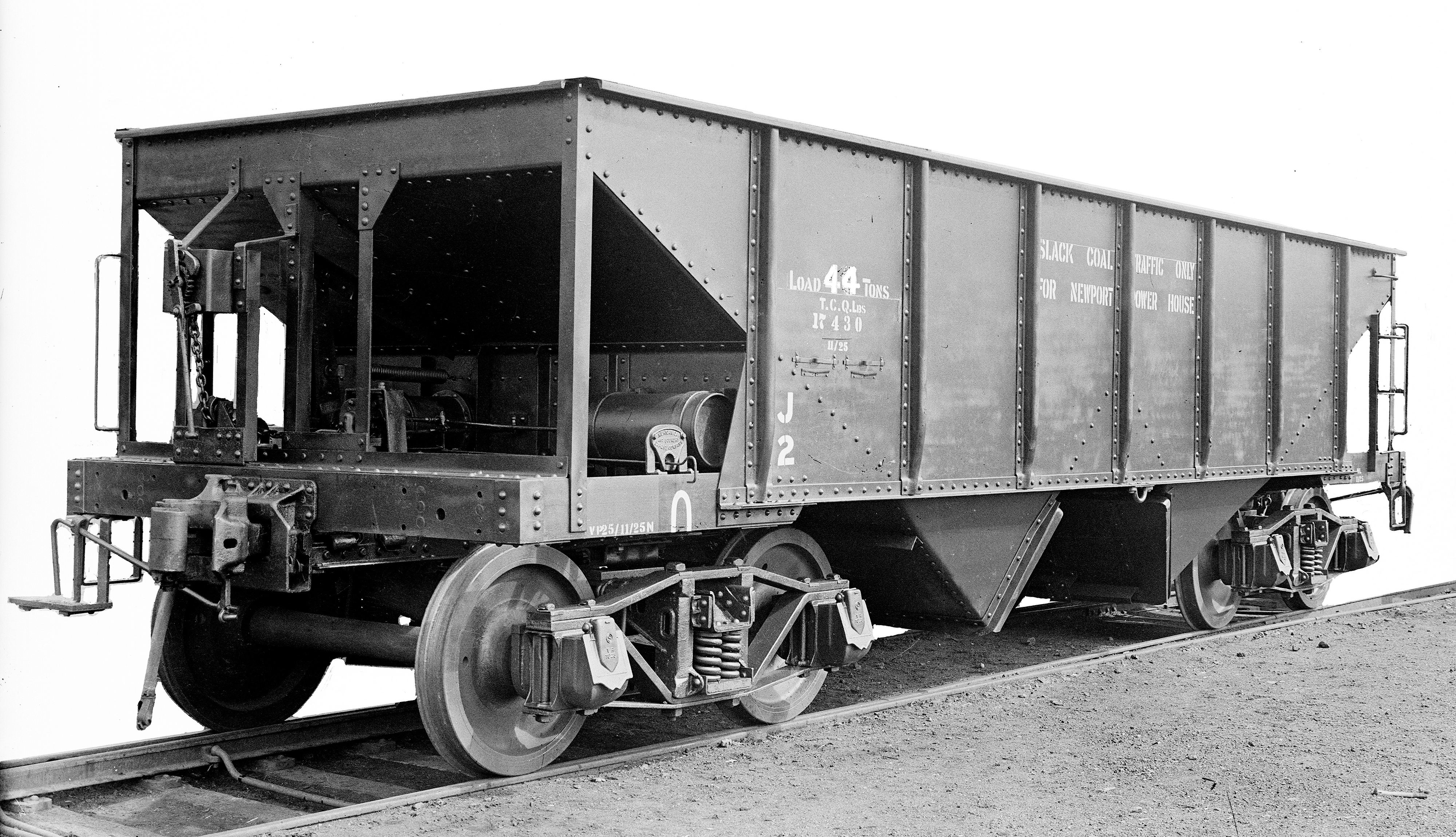
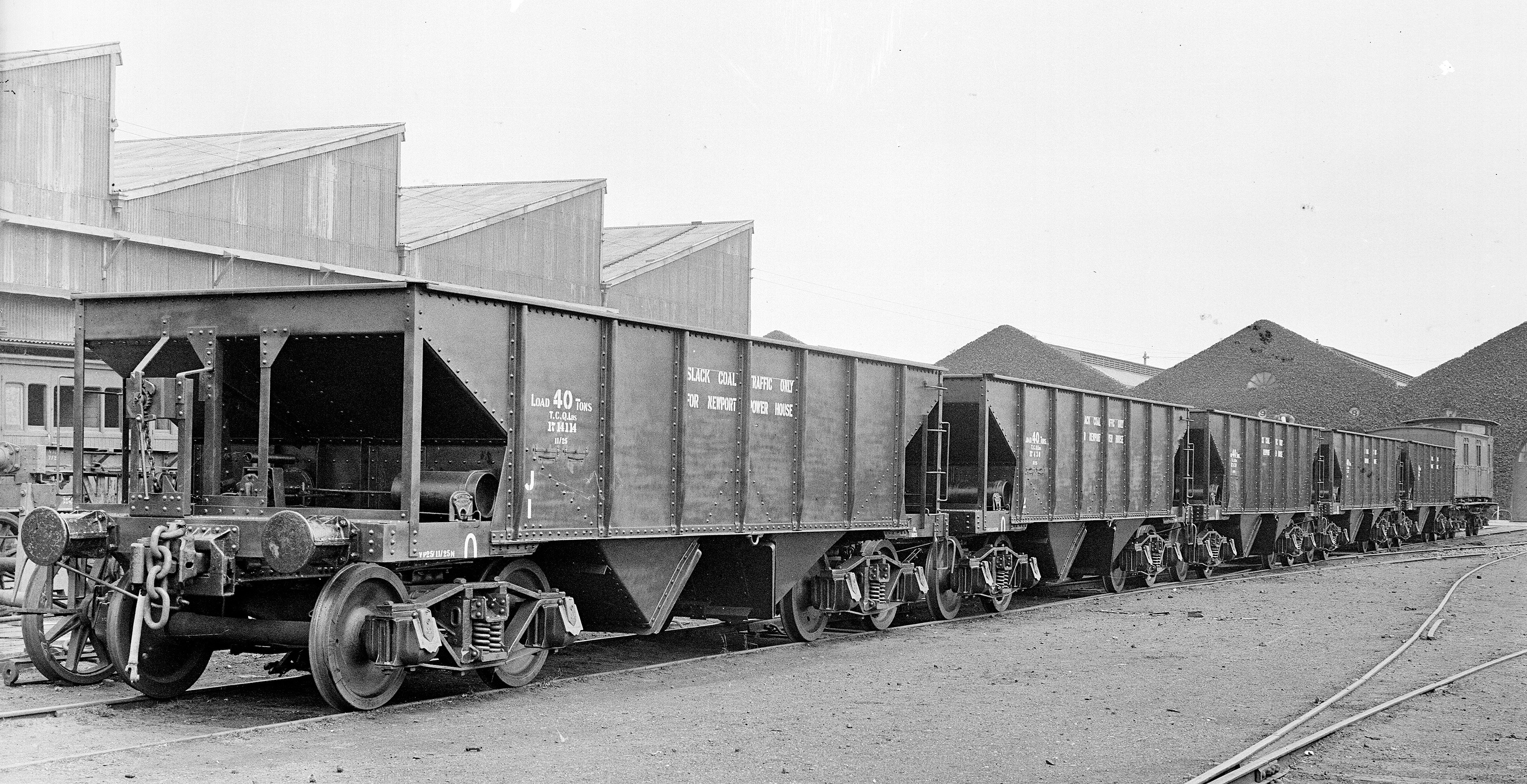
ABOVE: Five brand new J's presumeably just after assembly at Newport workshops, offical VR photo.
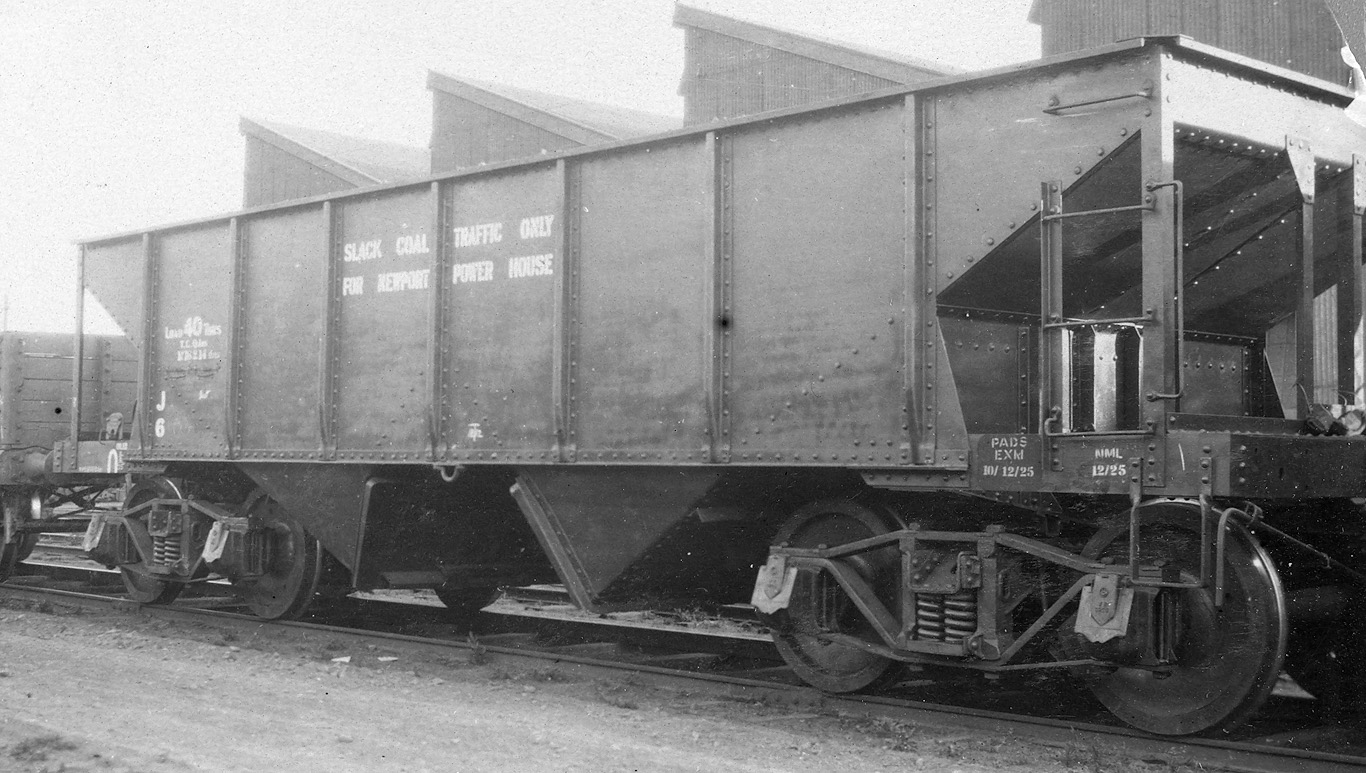
ABOVE: J 6 circa 1926, this wagon became CJ 80. Madden collection
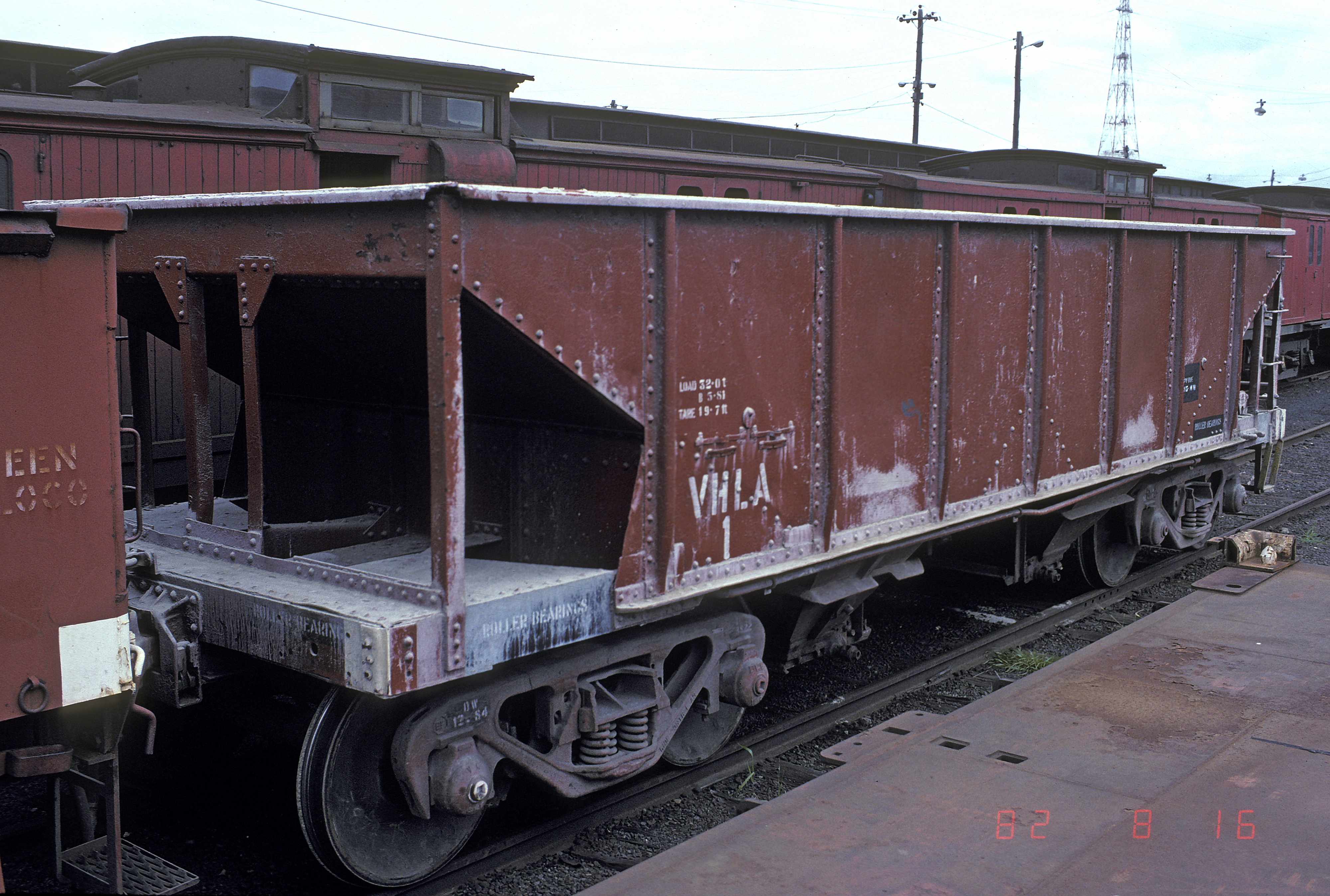
ABOVE: VHLA 1 spent much of its life as CJ 83. It was built as J 1, Nov 1925 converted to CJ 83 Nov. 1968. In 1981 it had its top cut off and effectively reconfigured back to its original form for limestone traffic. It was scrapped May 1983. Photo date Aug. 1982 at Nth Melb workshops, photo courtesy Peter J Vincent.
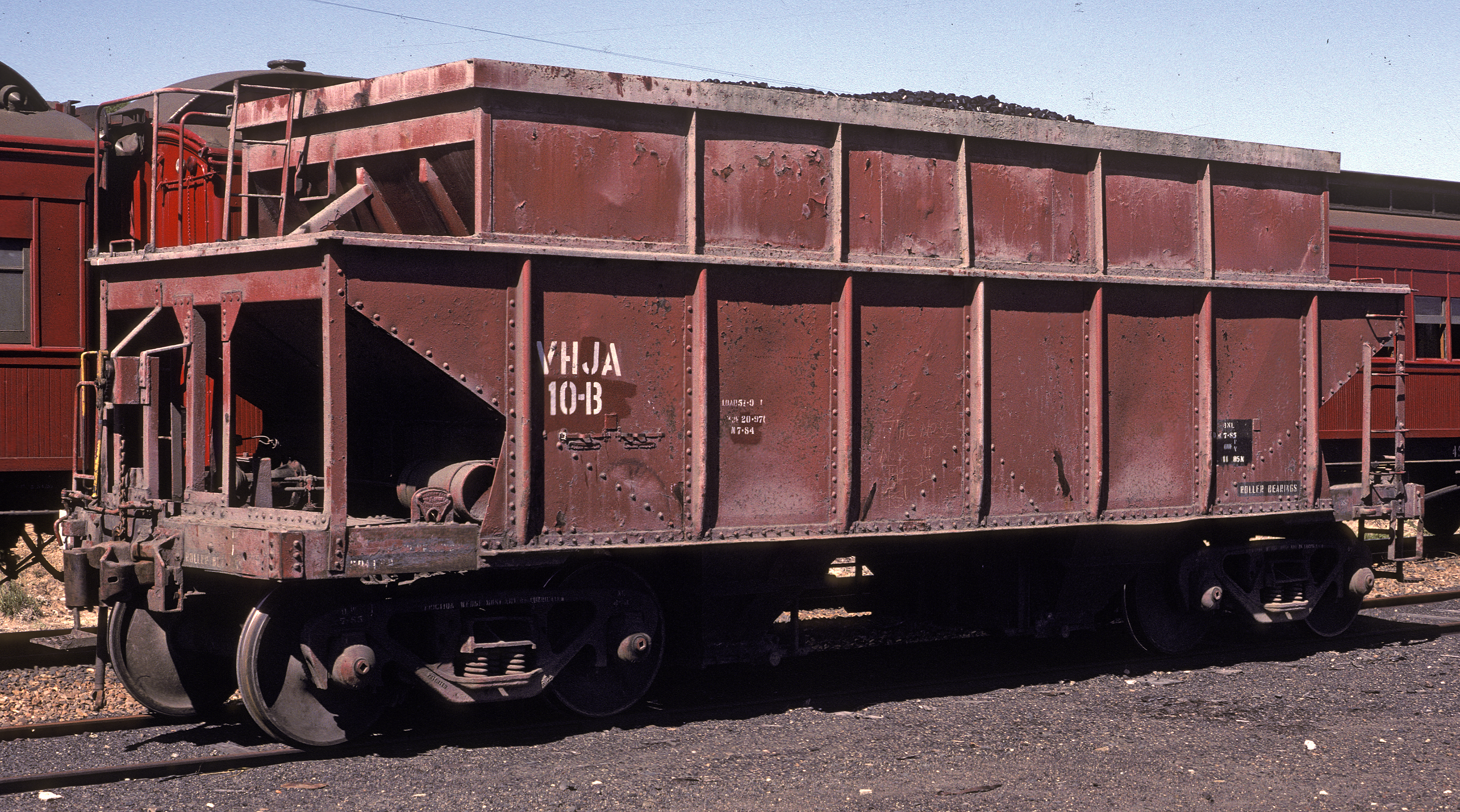
ABOVE: At least 10 VHCA had their roofs removed in 1984 for Gypsum traffic although in this photo it is seen carrying coal at Dennington, 1984.
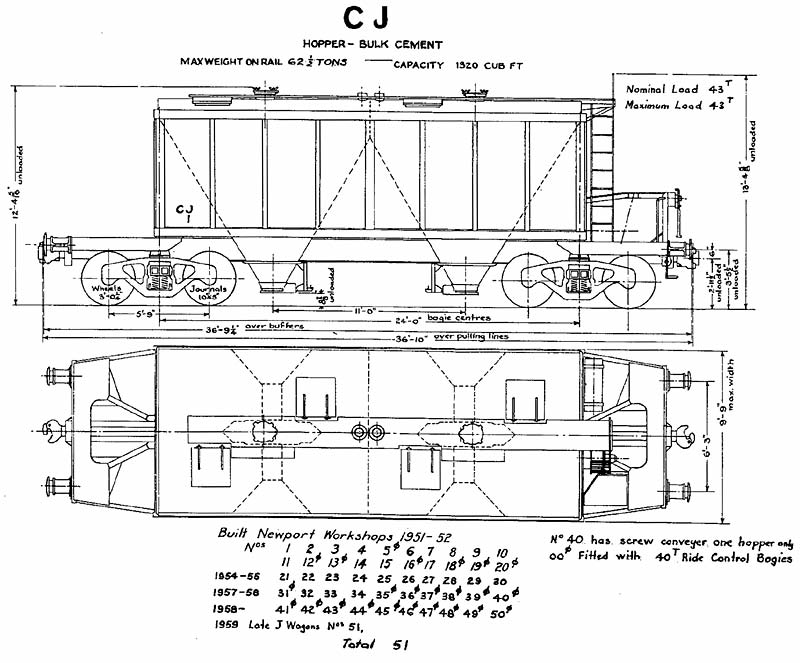
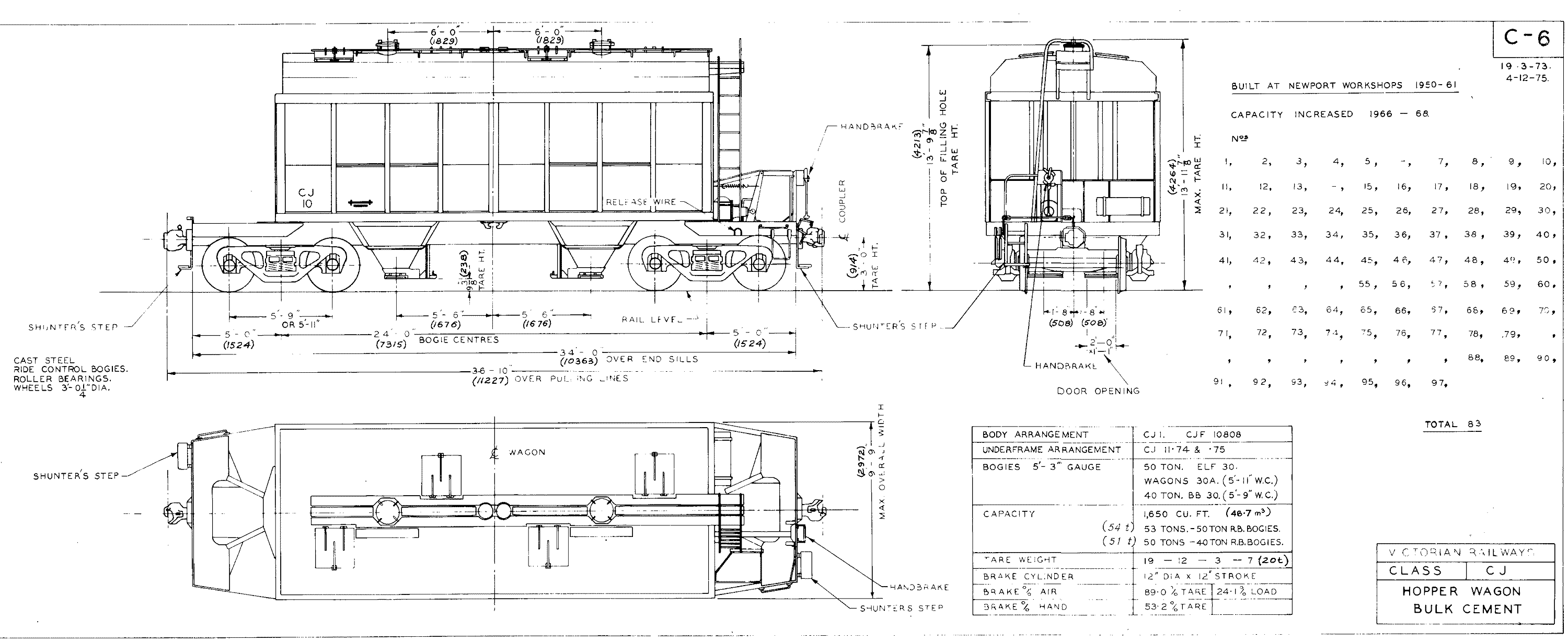
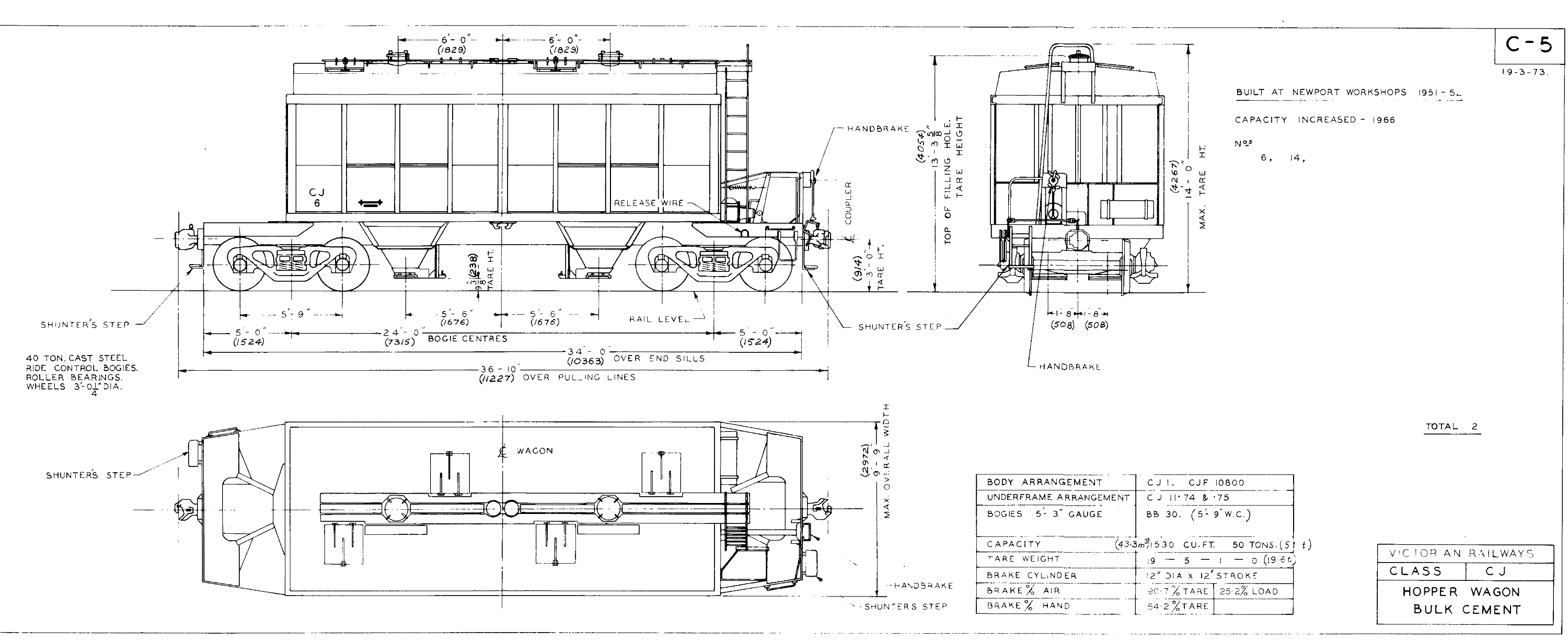
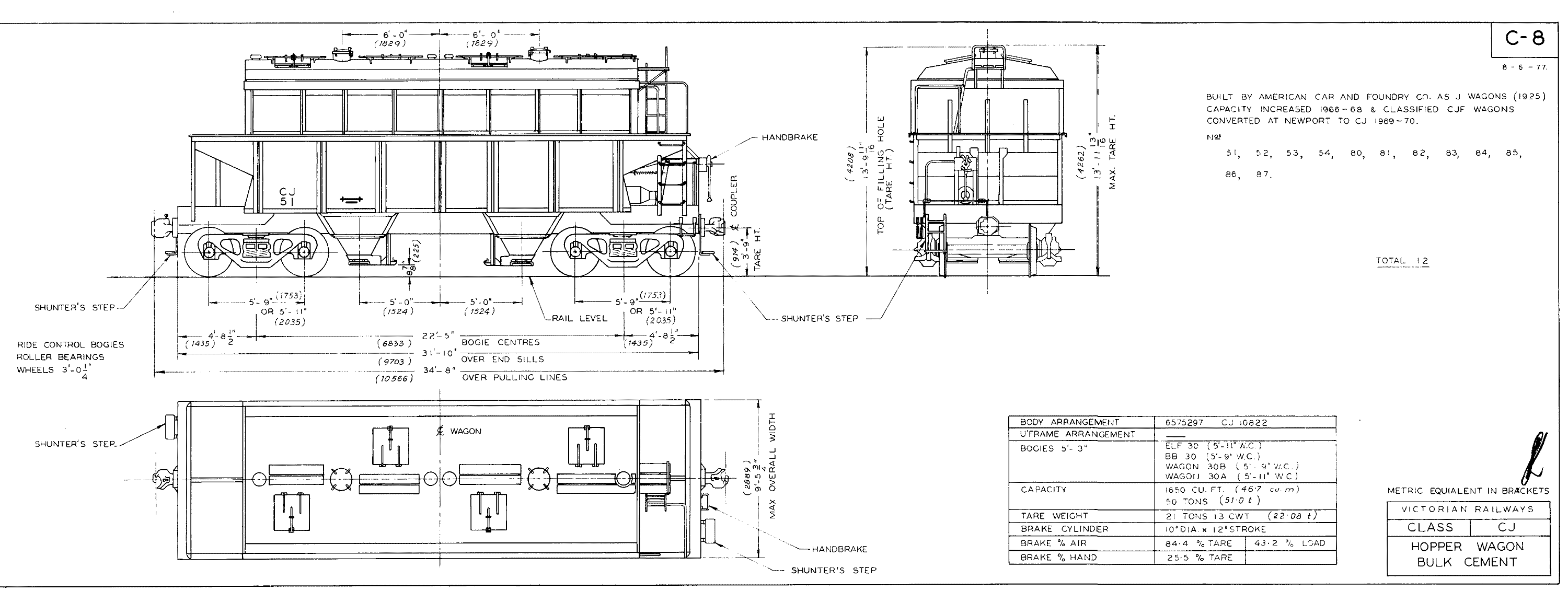
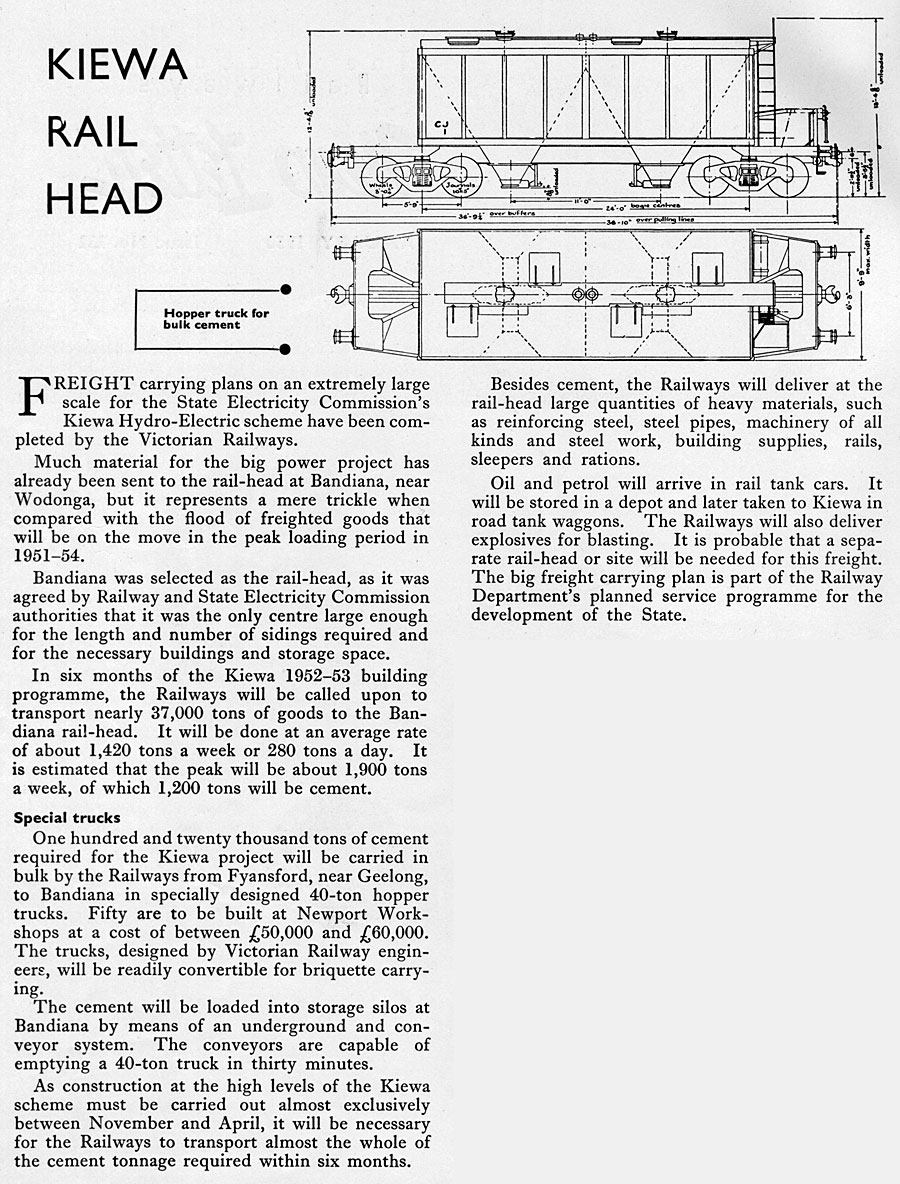
The article ABOVE is from the Jan. 1950 VR Newsletter
The article BELOW is from the June 1957 VR newletter
